So, I decided to devote the second part of the installation of air conditioners to the methods of laying tracks during repairs.
Briefly about the object. Townhouse, 3 floors, 5 Daikin split systems. Copper lines from 5 to 15 meters long. Drainage is flexible. Partitions - foam block and brick mixed. External walls are additionally insulated with 50 mm polystyrene foam and lined with tiles.
The first thing installation begins with is preliminary coordination with the customer of the exact location of indoor and outdoor units. This is one of the important stages, since it is necessary to know in advance the location of the furniture in the future home. Therefore, it is desirable to have a design project with the final arrangement of furniture. It is important to choose the installation location indoor unit so that it does not blow in the direction of the constant stay of people, where beds, sofas, armchairs, workplaces are located.
It is immediately necessary to take into account the technical aspects: the possibility of draining condensate from the indoor unit, the possibility of passing routes from the indoor unit to the outdoor unit. All options are being sought to avoid using a pump that pumps out condensate from the indoor unit (I’ll tell you about the pumps separately). After the power of air conditioners is selected, the length of the tracks is calculated. The air conditioner is selected taking into account the power and length of the route. At this stage, there may be special requirements for the placement of the outdoor unit, but these are all individual points.
So, after drawing up a mini-project for the location of blocks, routes and drainages, we get to work. I will give an example on two blocks that will hang over one doorway, but in different rooms.
To begin with, we draw an indoor unit (the most common dimensions are 800 wide, 300 high)
and draw a future strobe under the track and under the drainage. Unfortunately, the partner blew out the drawn strobe faster than I managed to photograph)))
Photos in one room-
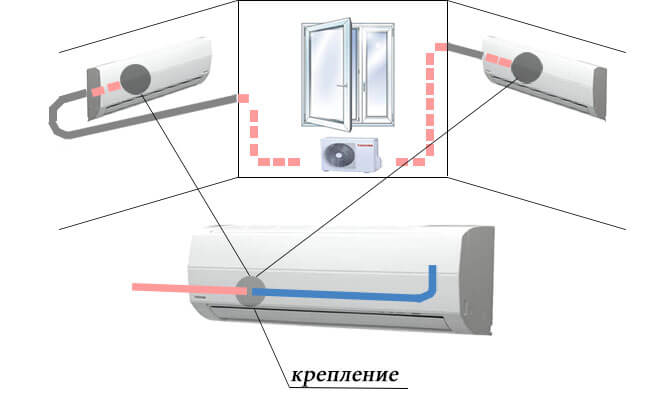
Photo behind the wall in another room -
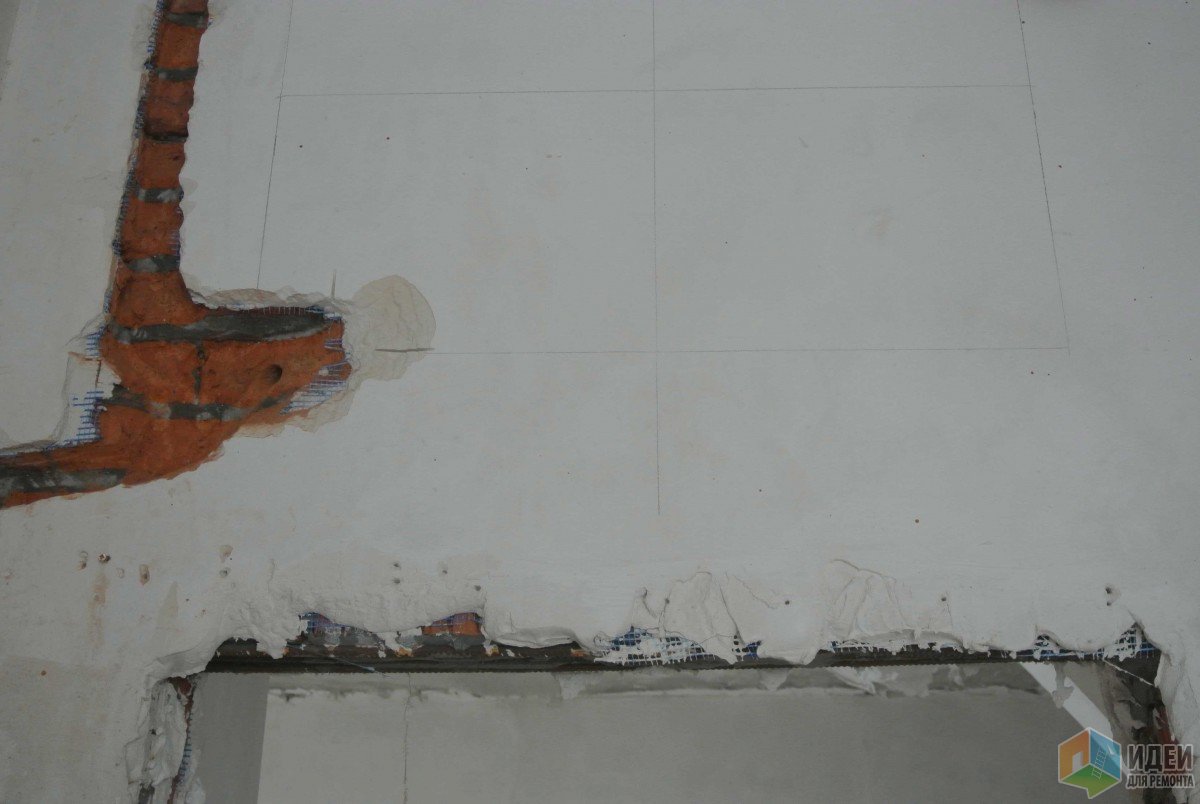
Blocks are centered on the doorway.
I want to pay attention to the following nuances at this stage.
1. When drawing, it is necessary to take into account the minimum height from the future ceiling to the top of the air conditioner: 50mm - minimum, 100mm - good, 150mm - excellent. Do not forget to also take into account future stucco molding!
There are very, very many cases when they forget to take into account the stucco molding.
2. Distance from the top of the doorway to the bottom of the air conditioner. There are very wide architraves at the doors, respectively, it is desirable to retreat 100 mm.
3. The route with copper pipes in 99% of cases should enter the air conditioner on the left side.
A rare exception that I meet is with Midea air conditioners.
4. Drainage can enter the block, both on the left side and on the right. Again, the exception is 20% of Chinese air conditioners.
5. Drainage should be laid with a continuous slope from the indoor unit. There should be no horizontal sections, as well as sections with a reverse slope.
6. If possible, lay the drainage for the first 15 cm with a strong slope, because During construction, 20% of the indoor blocks have to be lowered (due to stucco molding, ceilings, etc.) And in order not to shift all the drainage, these 15 cm are cut out and laid with a smaller slope.
7. The block is drawn in order to understand the future dimensions of the block. And bring the tracks under them so that they hide under the block.
8. In the area of the future indoor unit, exclude the passage of pipes, wires, etc. Since then the block will be attached, and damage is possible. That is why we take the tracks outside the limits.
Next, we cut the strobes with a grinder, and knock them out with a perforator. The wall chaser is a useless thing in this matter, terribly inconvenient.
Finished strobes look like this -
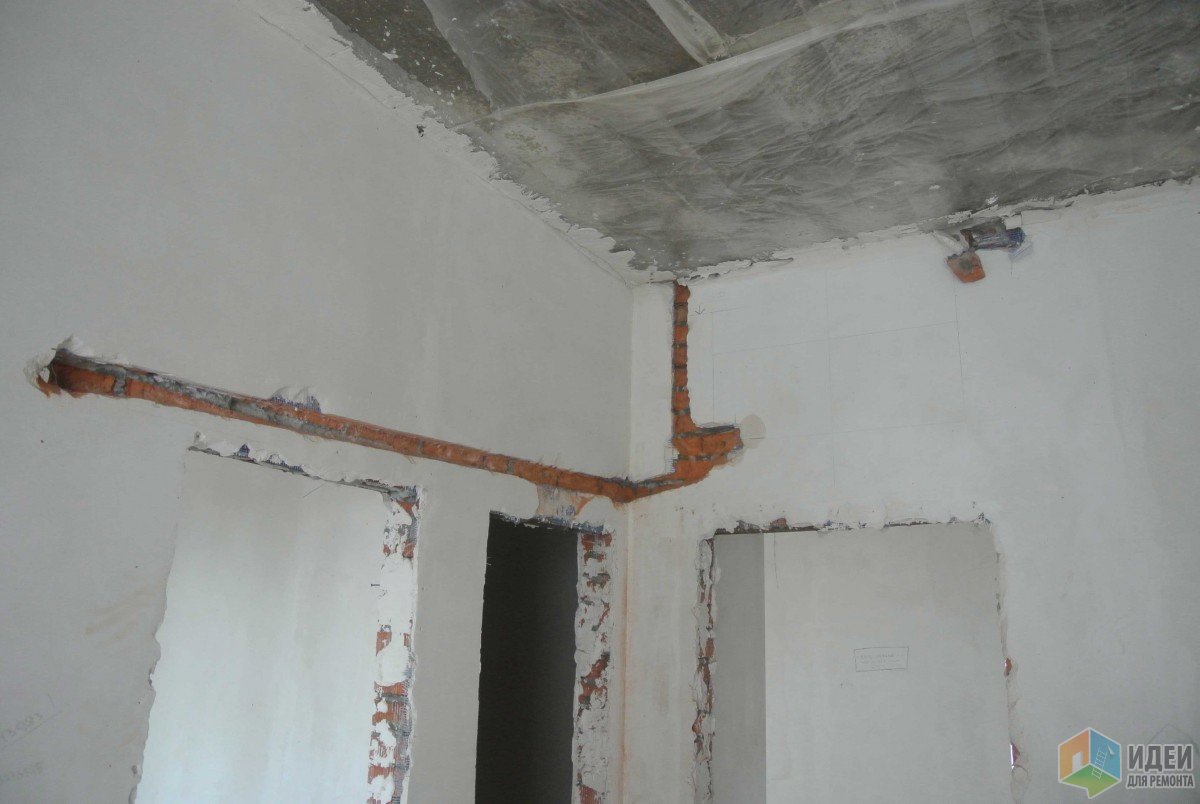
Drilling a hole into the street
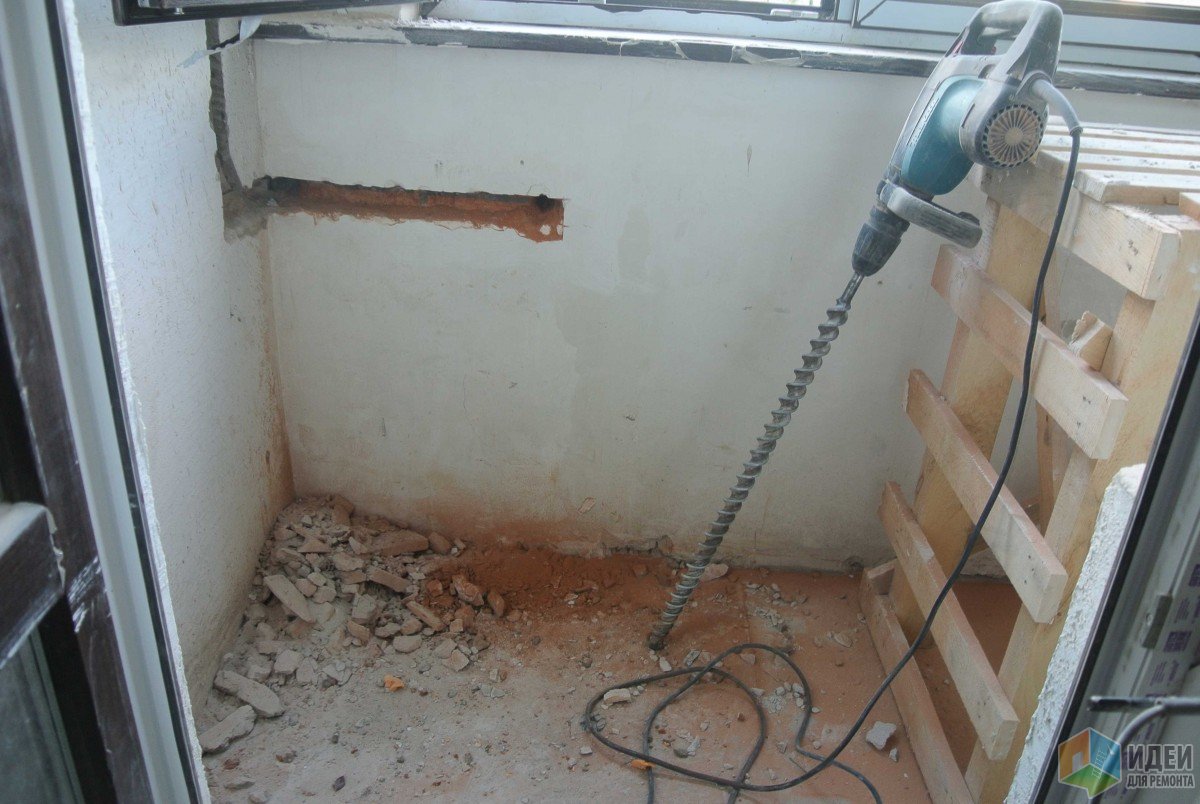
If possible, carefully drill the exit hole on the street
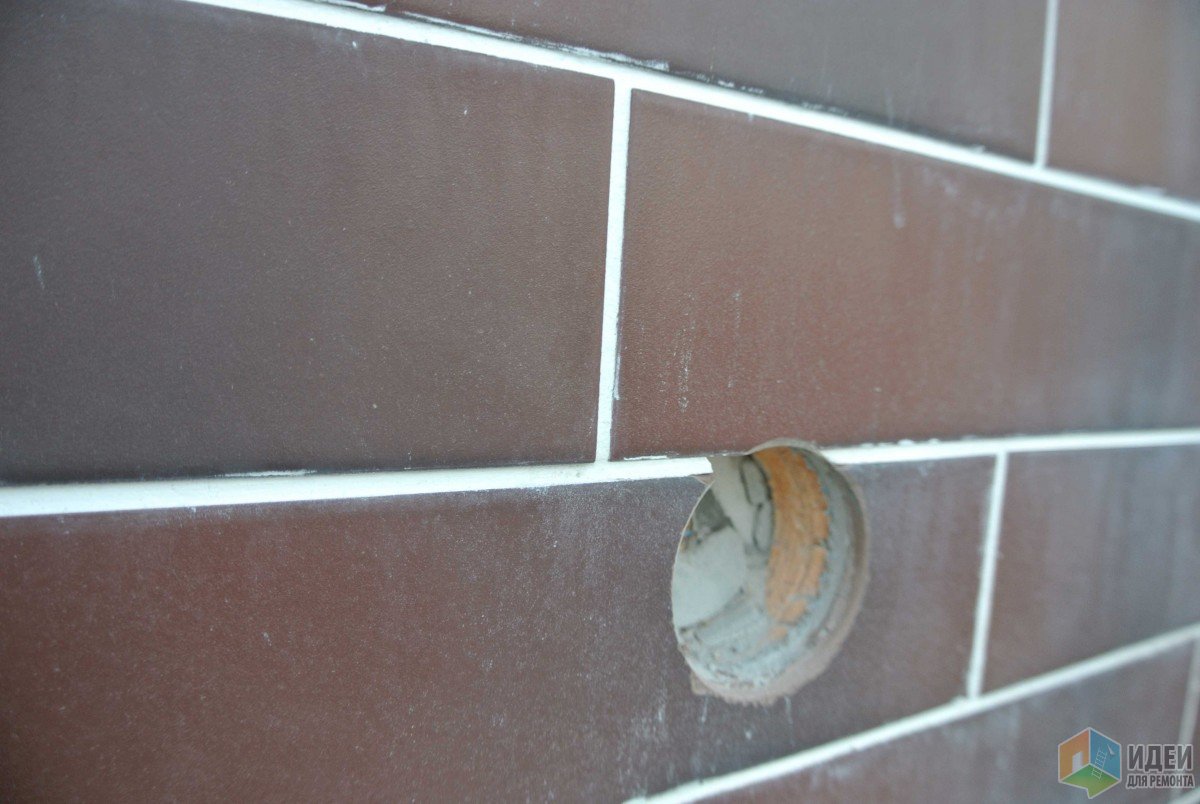
Let's start building tracks.
The term route usually means two pipes in the insulation and a cable for connecting the blocks to each other.
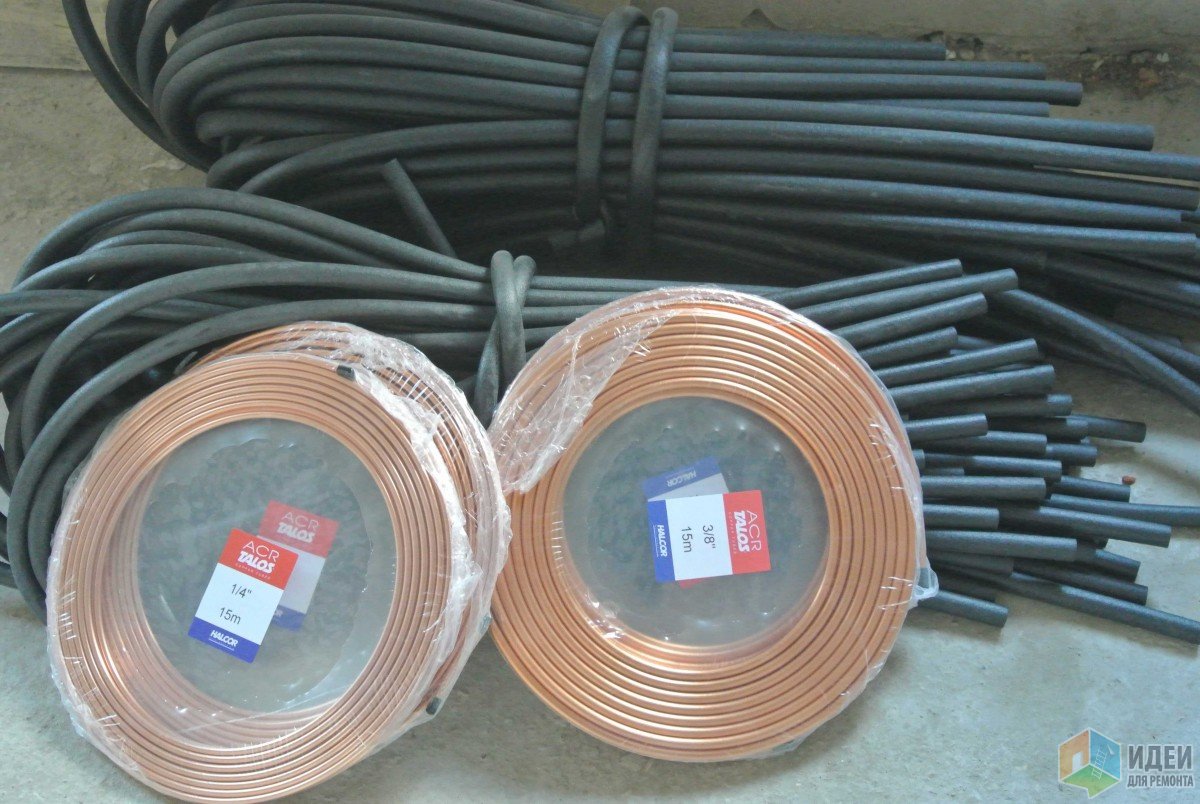
The choice of track diameters is set by the manufacturer. For low power units, these are 1/4 (6mm) and 3/8 (10mm). Routes using pipes 12mm, 15mm, 19mm are also possible. Larger diameters are used for industrial systems.
The assembly of the route goes in the following order:
1. Rolling out the track. Important point- you can’t step on the pipe, otherwise it will form a hall, it will need to be corrected.
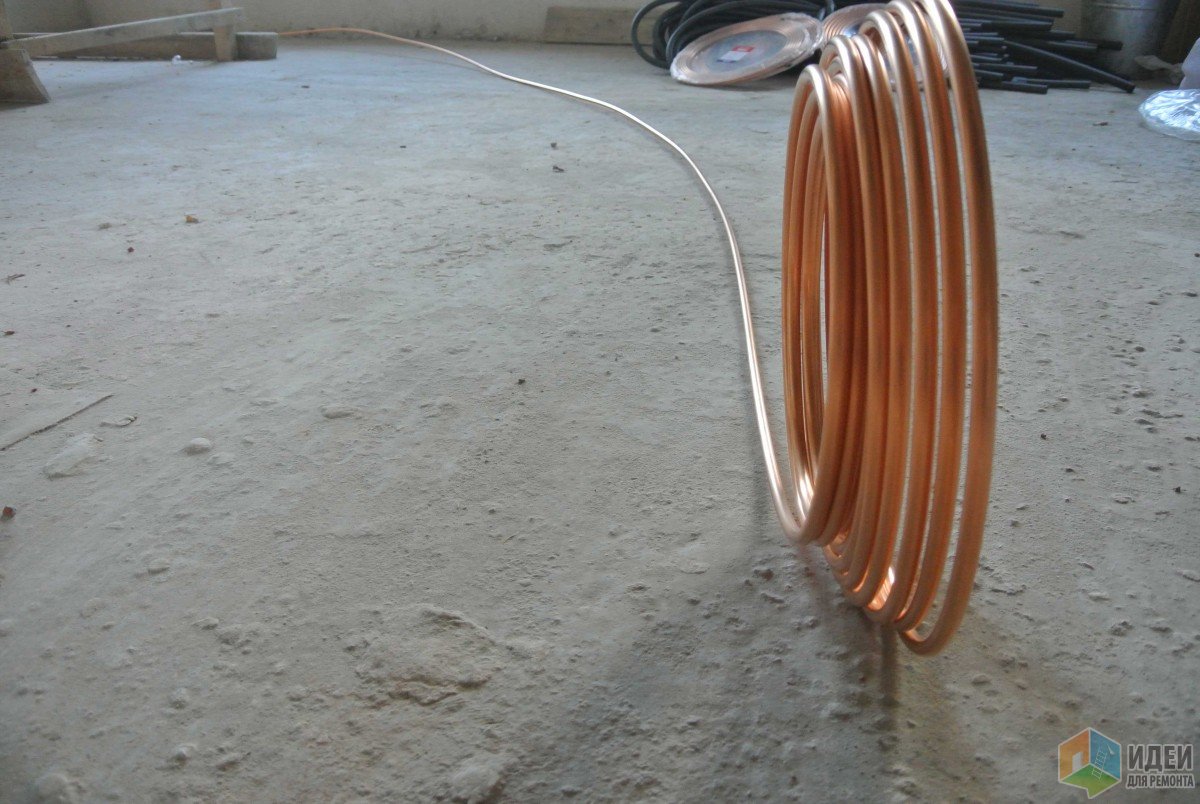
2. Warming. An important point - the joints must be sealed.
![]()

3. Pulling the cable into the corrugation. Fastening the cable to the track. We usually use the cable PVA 4x1.5. The exception is Chinese air conditioners, which require a five-core cable most often.
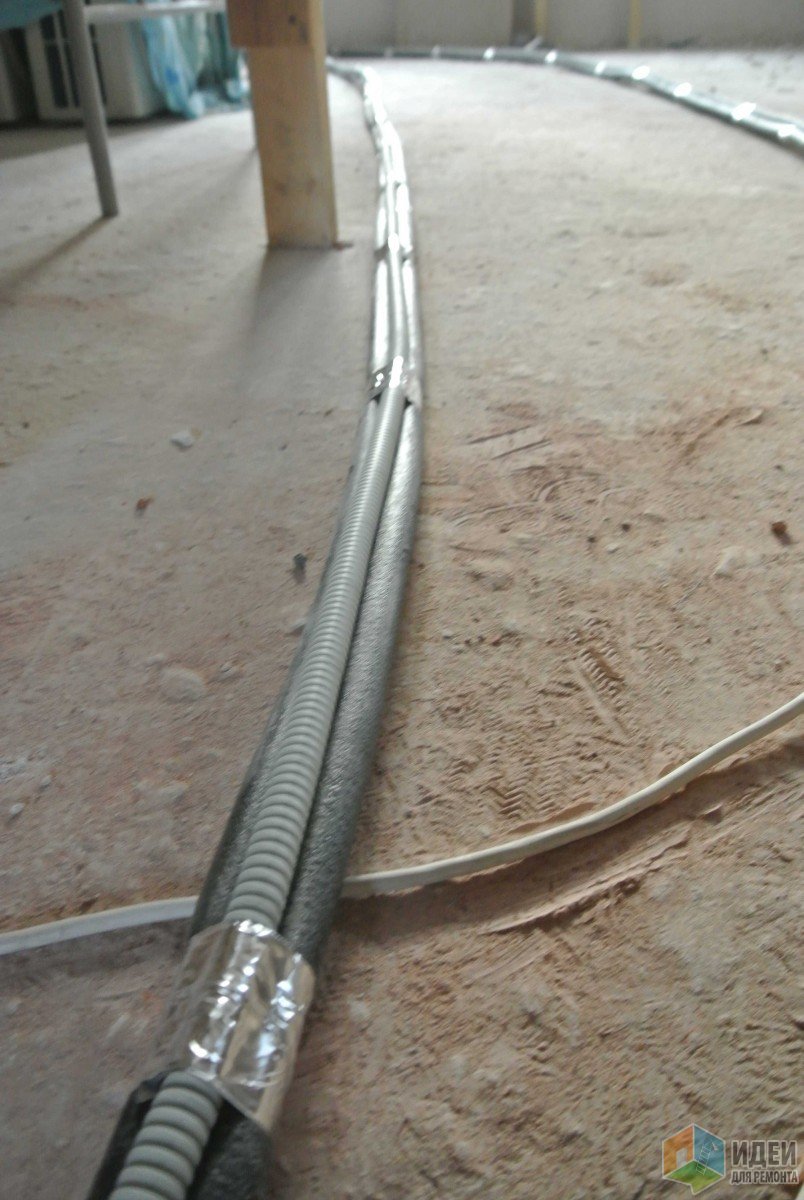
The track is ready.
Now we put it in prepared strobes and fasten it into pre-drilled holes
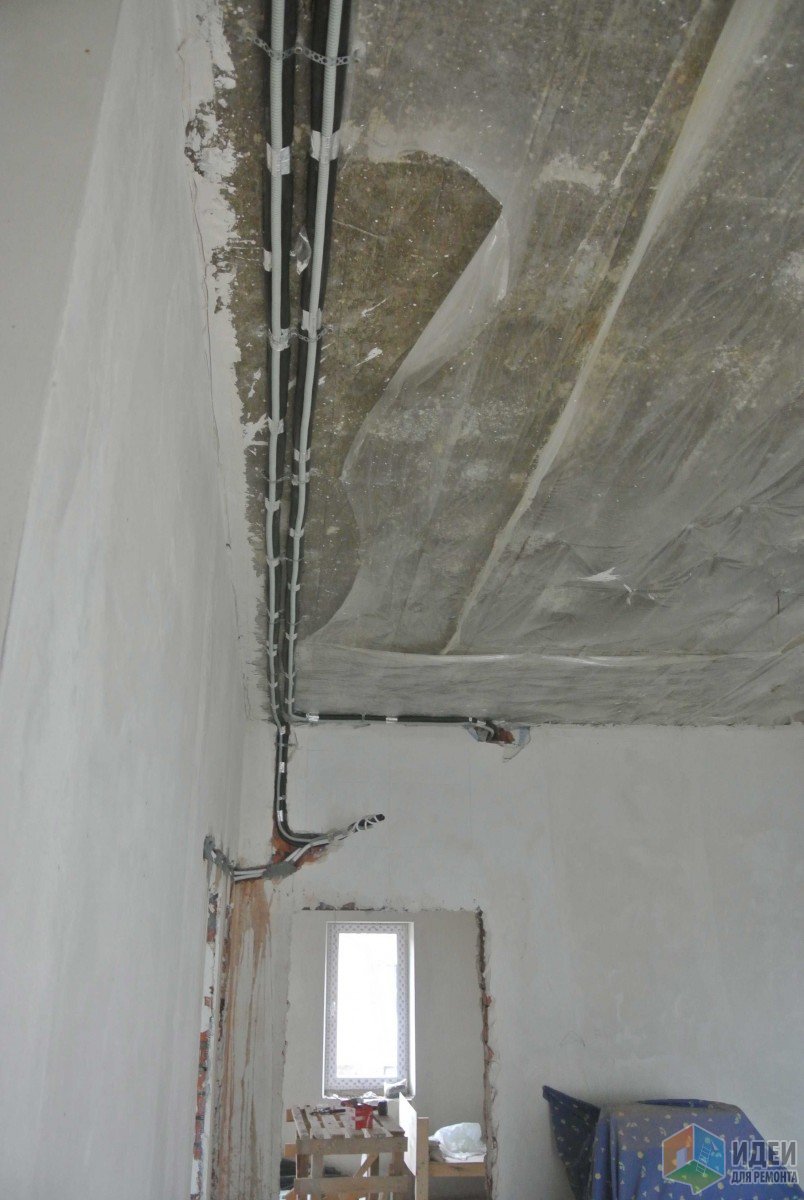
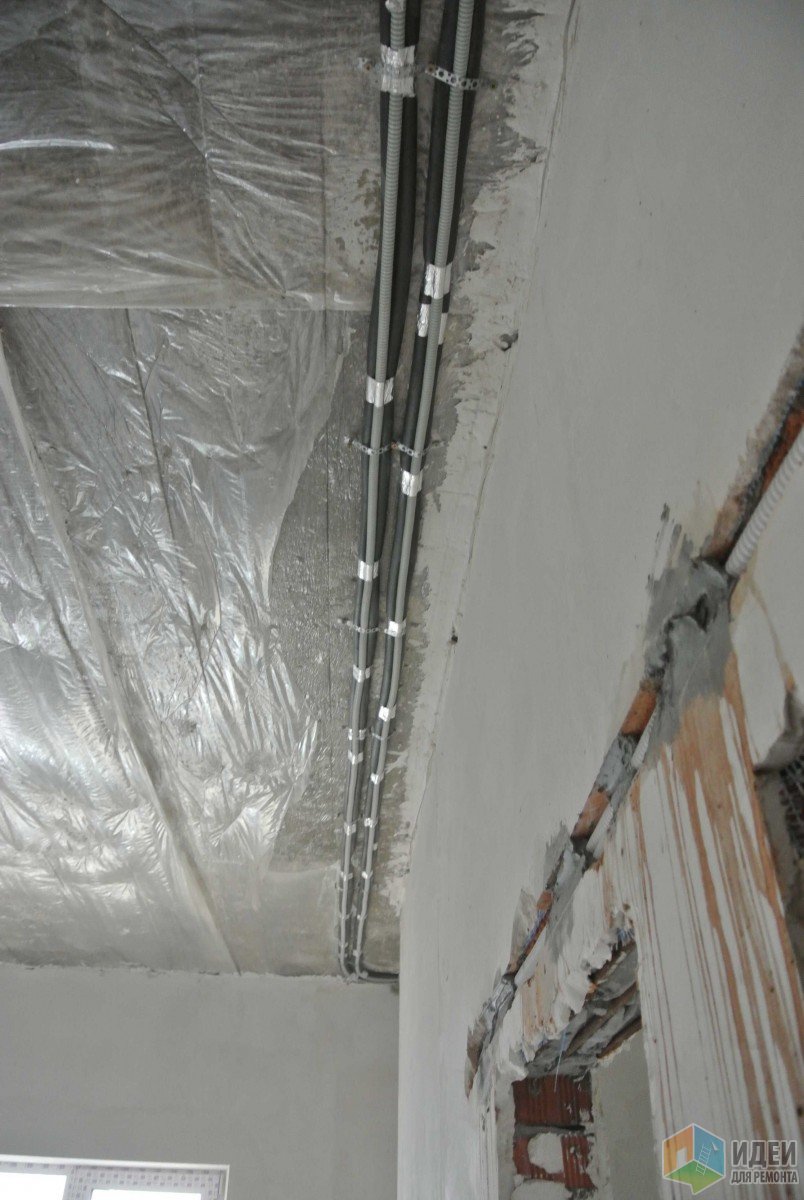
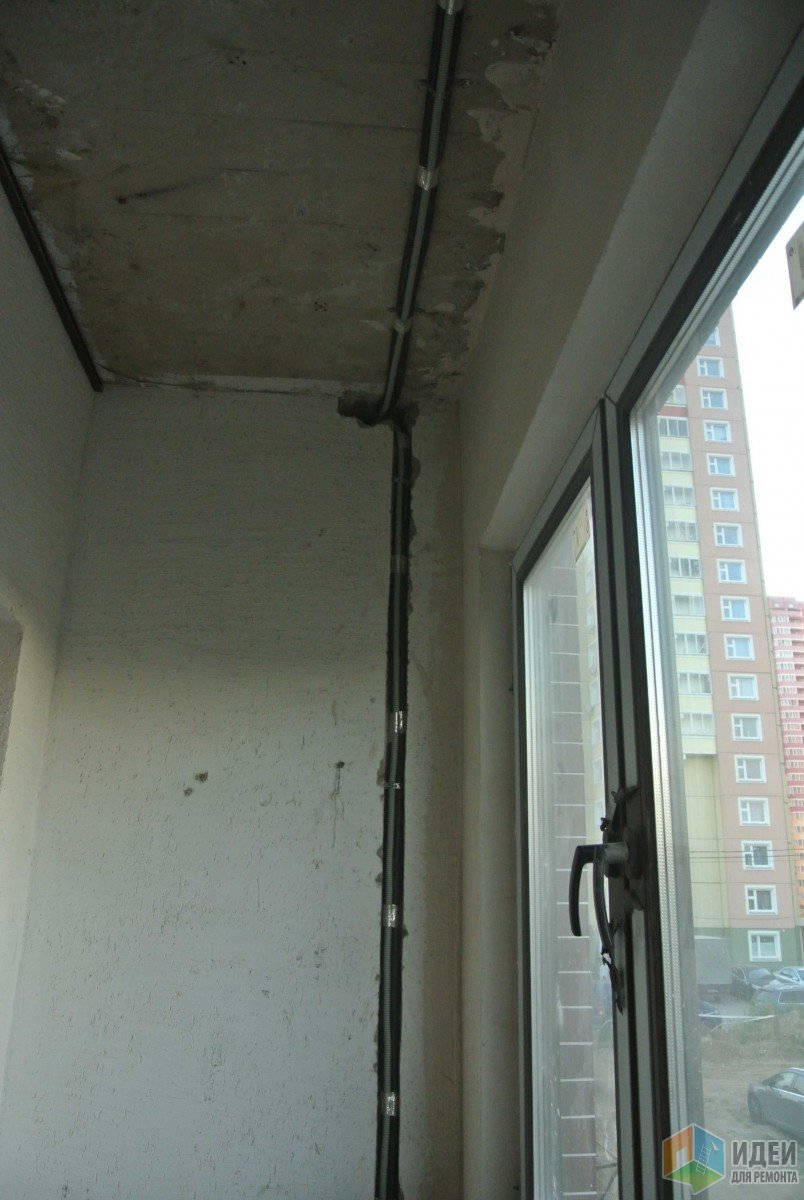
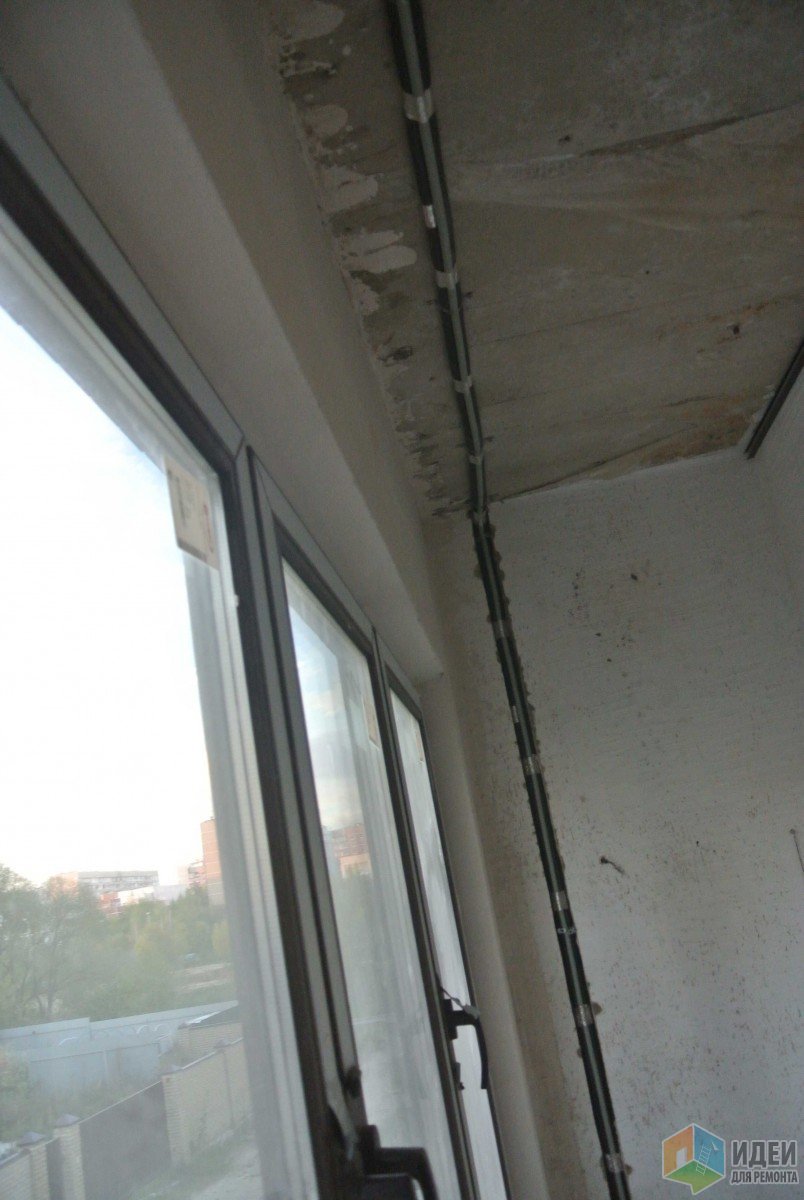
If possible, lay a small piece of pipe (white in the photo) for the power cable, which will be served later
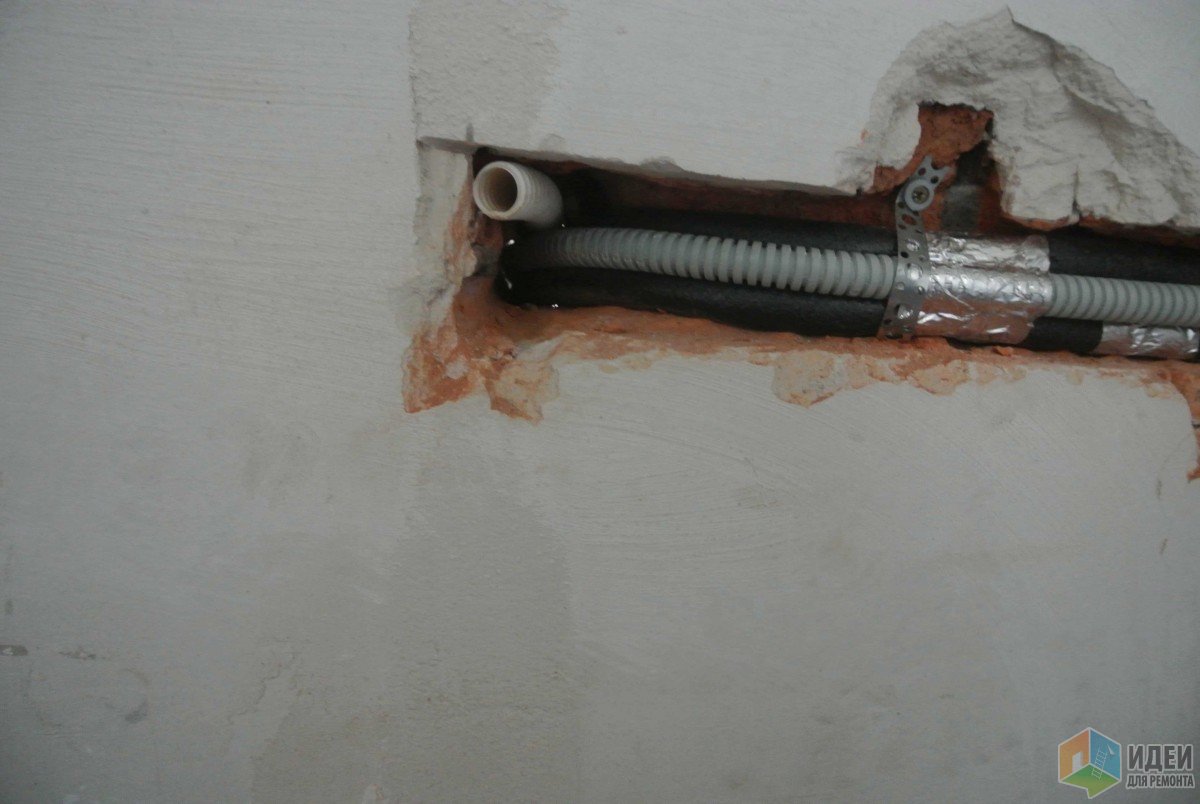
Conclusion on the street (done with a margin)
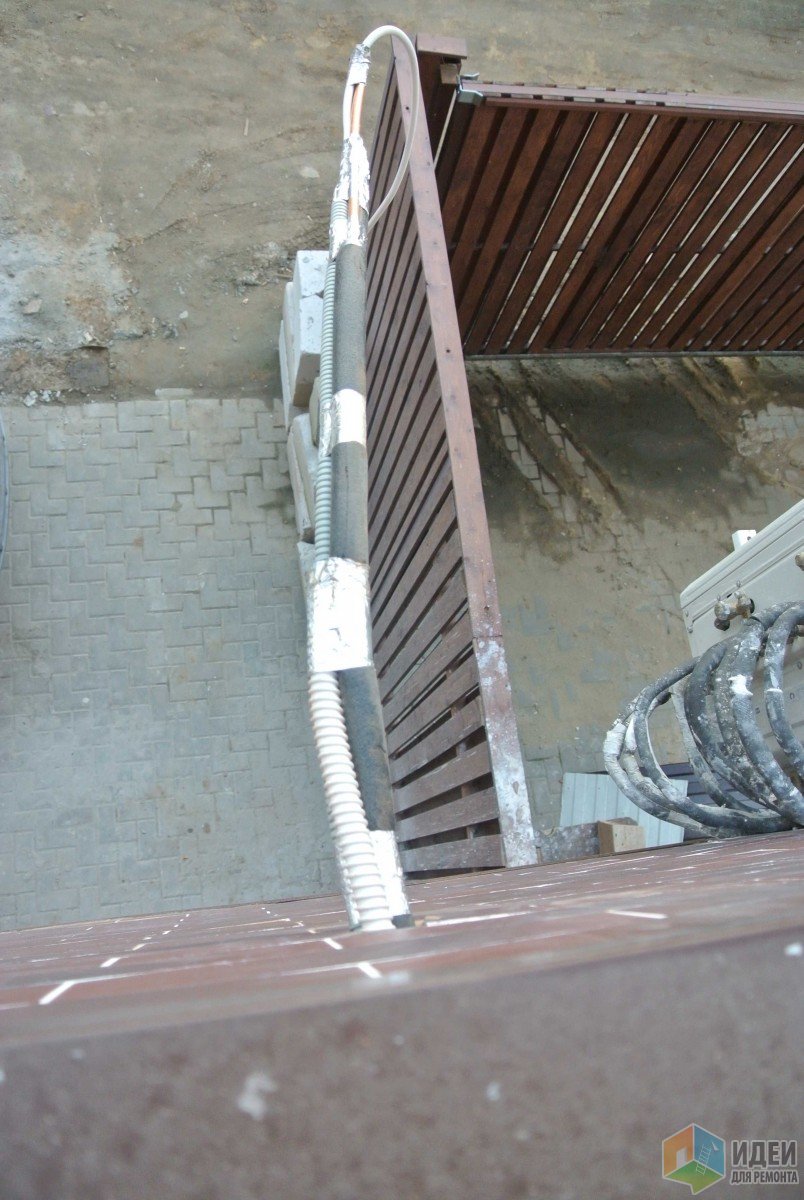
The drainage is laid in its gate and is led towards the sewer. Drainage is usually fixed either with perforated tape or frozen with plaster or gypsum. Each indoor unit has its own tube.
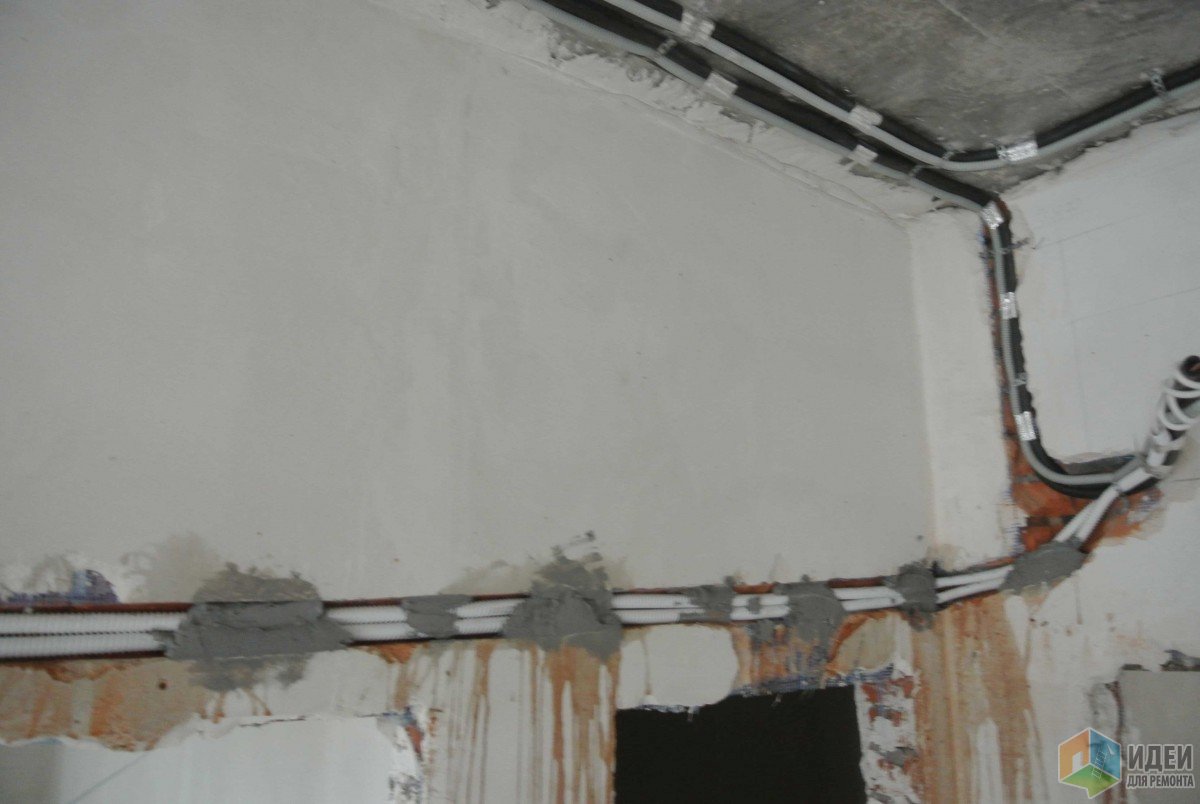
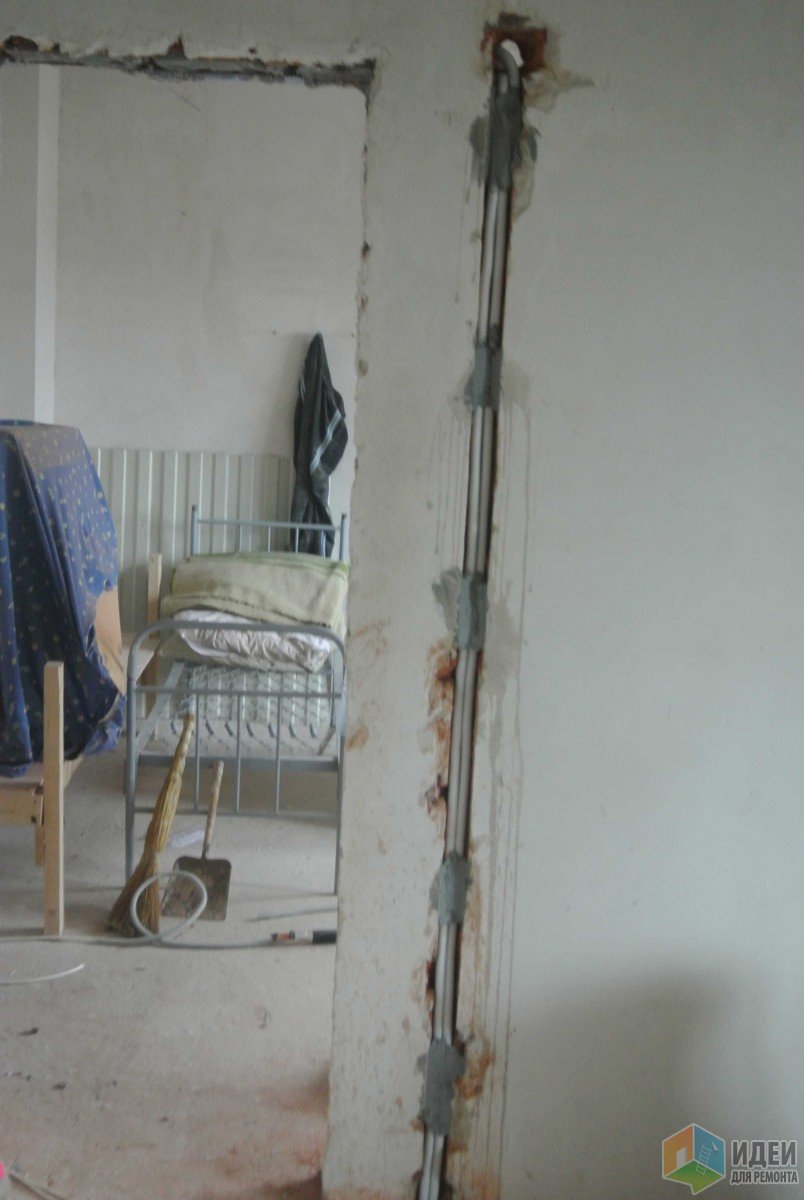
It is connected to the sewer through a drip funnel (also called dry siphon, drip, siphon with jet break). Someday I will make a blog about them and their device and principle of operation.
Drainage (white) has a diameter of 16. There are also 20, 25, 32. With large drainage lengths (more than 6-8 meters along the horizon), we use a pipe sewer PVC 32 mm. Someone uses a metal-plastic pipe.
Drainage is ready. I remind you that the main thing is the absence of horizontal sections and sections with a reverse slope. If not observed, the air conditioner may start to make a squelching sound, and there is a high probability that water will not be able to pass and will drip from the indoor unit.
So, and another moment with the exit of tubes and wires at the indoor unit.
The pipes should come out in this bundle and in this order: copper pipes closer to the wall, cable closer to the top, drainage at the bottom. This feature will make it easier and more correct to connect the unit.
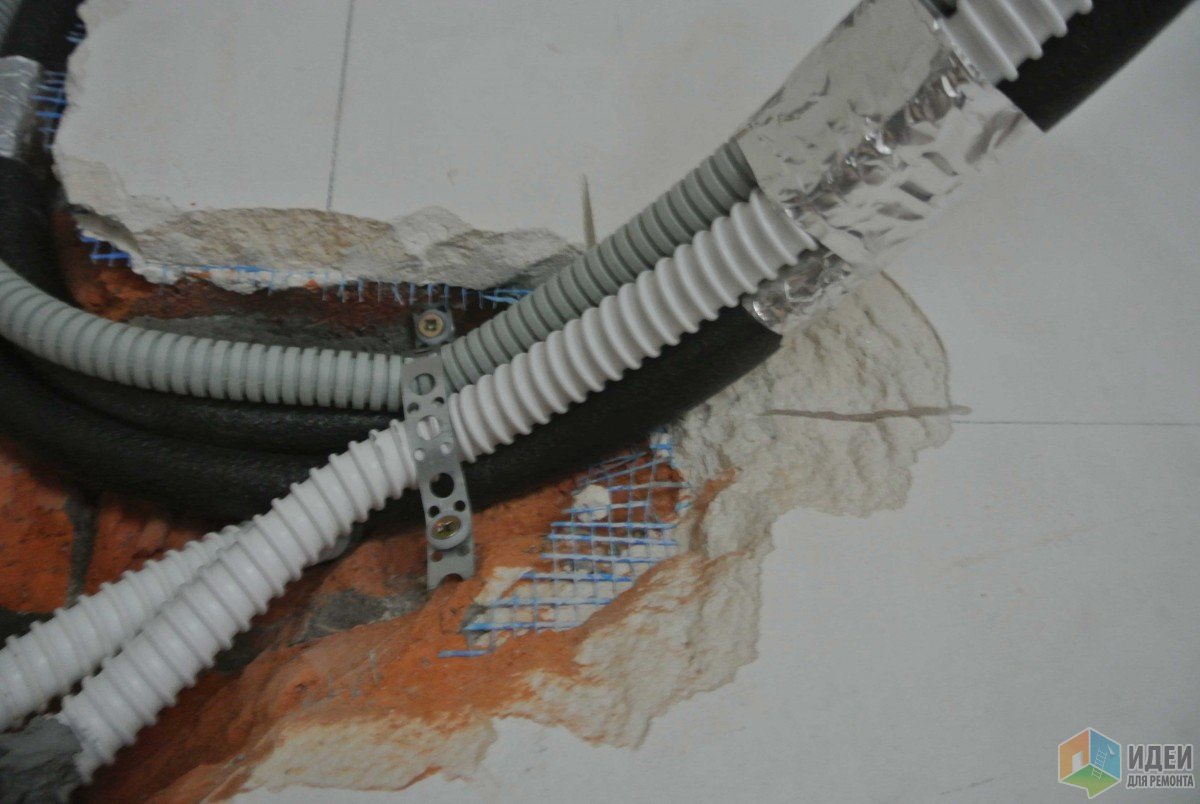
Or in this way without drainage in a common beam
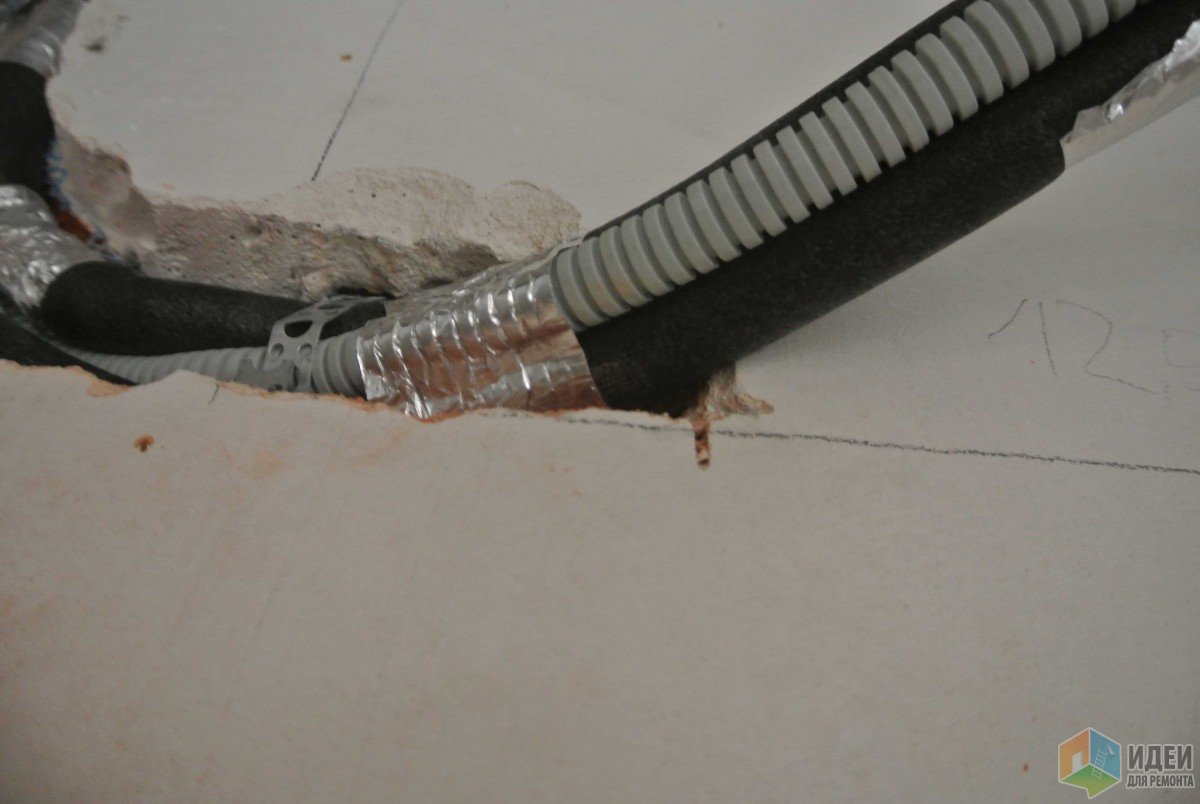
Ready option with a drainage exit in the right corner - So, the laying of the tracks ends here. And here, too, there are nuances. And they concern keeping the tracks in good condition.
Usually, after the laying of the tracks, work is carried out on sealing the strobe, puttying, and pasting the wallpaper. And our pipes make it very difficult to work. And what do painters do? They bend the pipes, then they bend the pipes, then they bend them. Doing this is STRICTLY FORBIDDEN. You don’t need to bend it, as the air conditioners did, the pipe should remain in this position.
That's what happens then, if you bend it - this is a hall that needs to be soldered. Photo from another object.
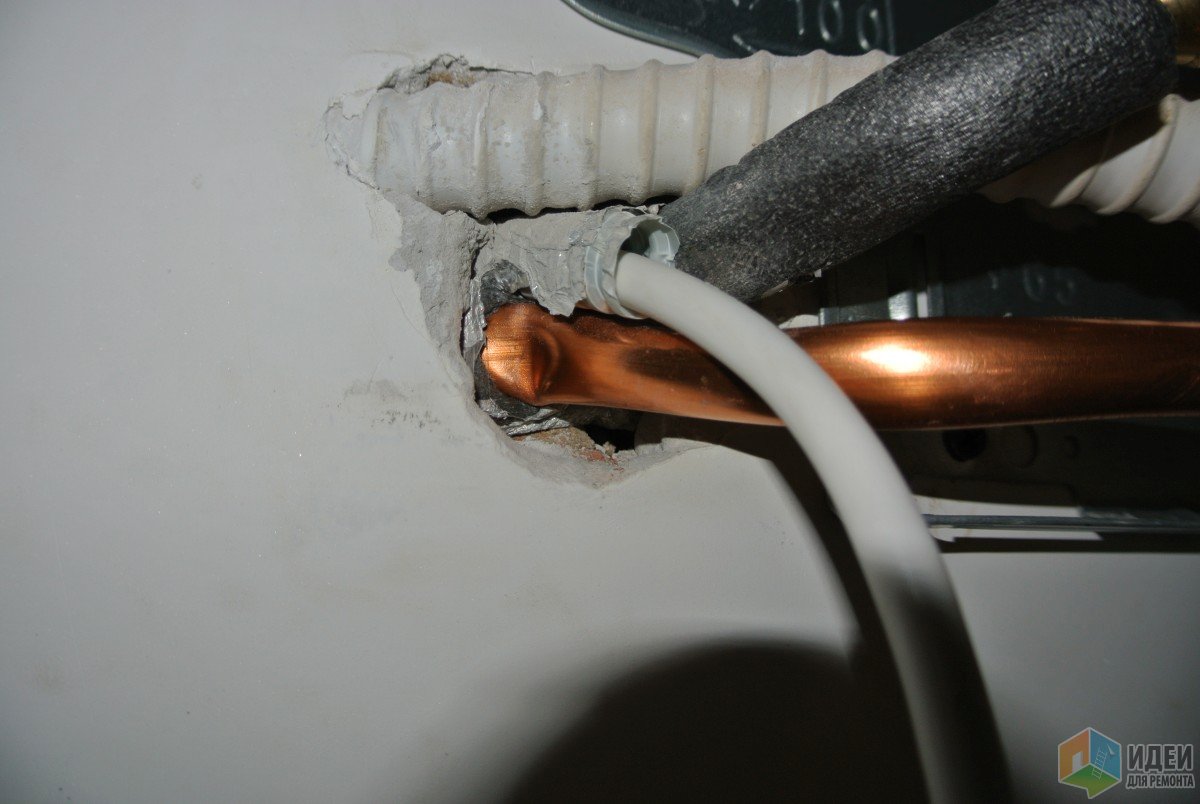
And for this you need to open the wall
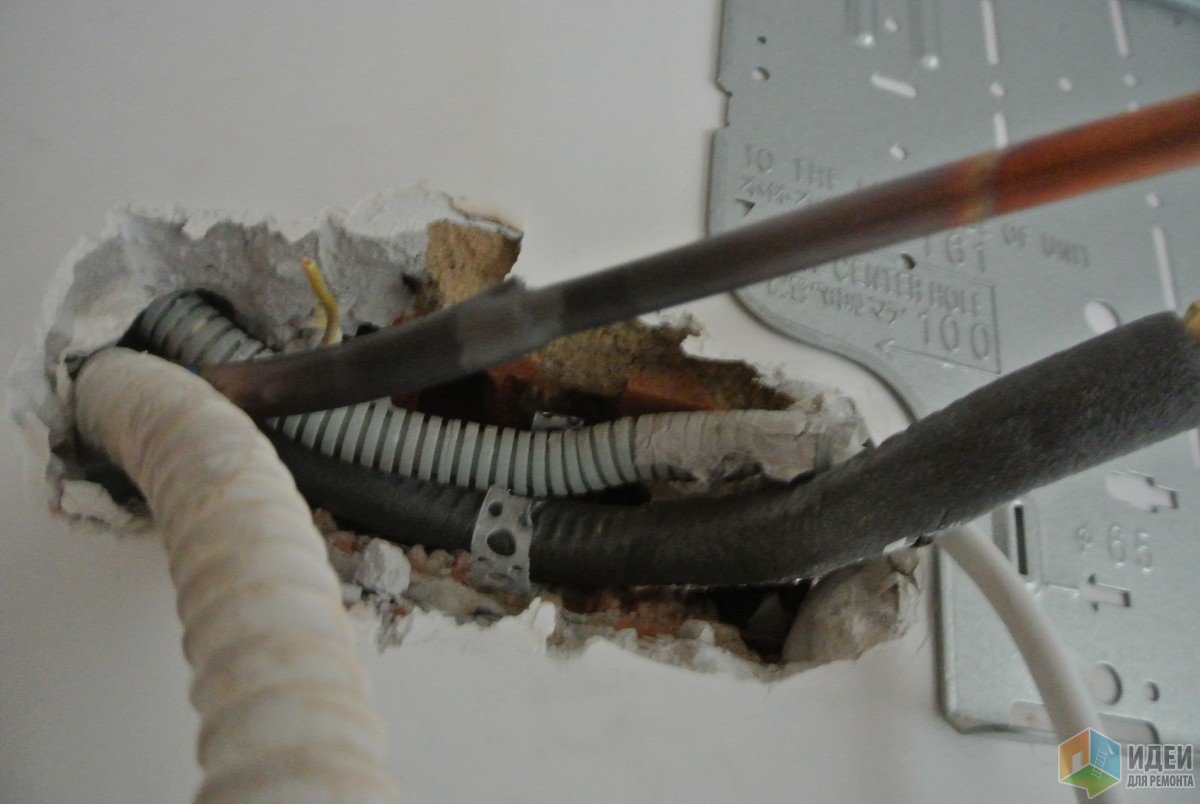
And in the end it looks like this
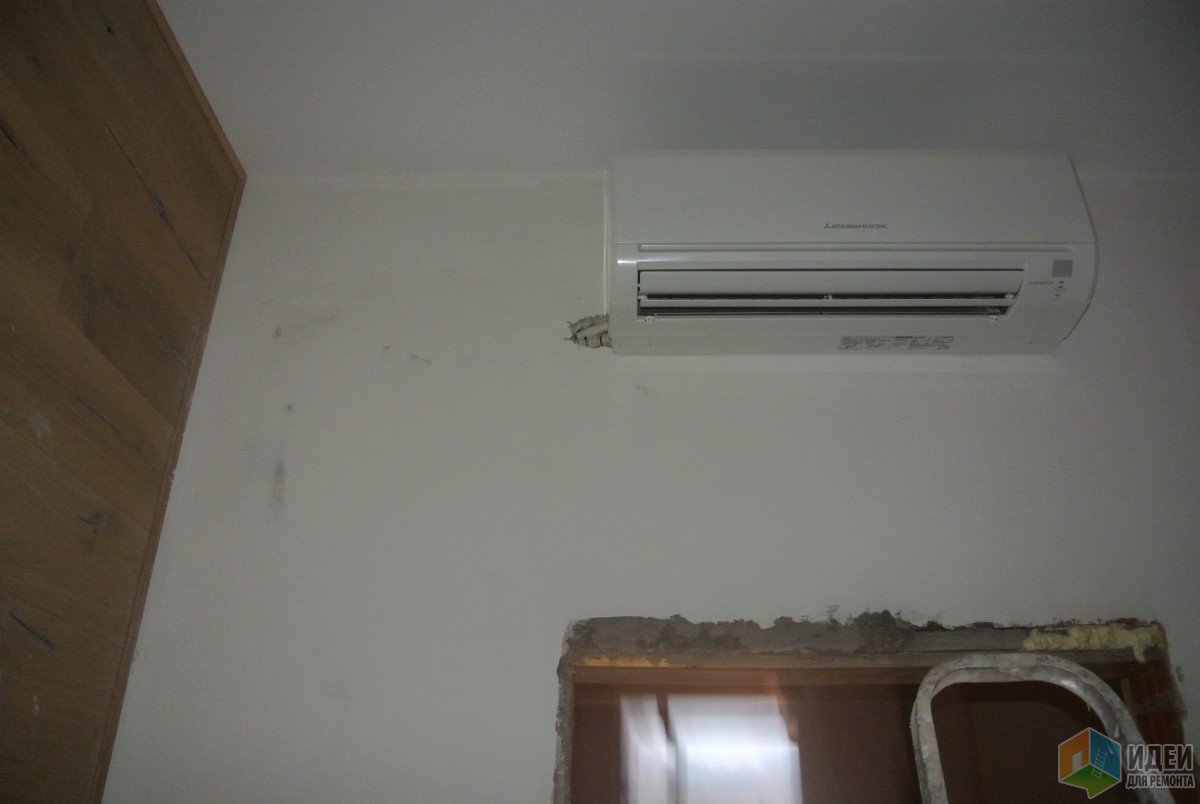
Fortunately, the walls were not yet painted (which is wrong, but the foremen insisted)
Let me remind you that the block must be hung on ready-made walls, painted or with wallpaper.
General picture of our townhouse. The outdoor blocks were hung immediately, the visors were installed. Note that the tracks are hidden behind the block and do not follow the facade
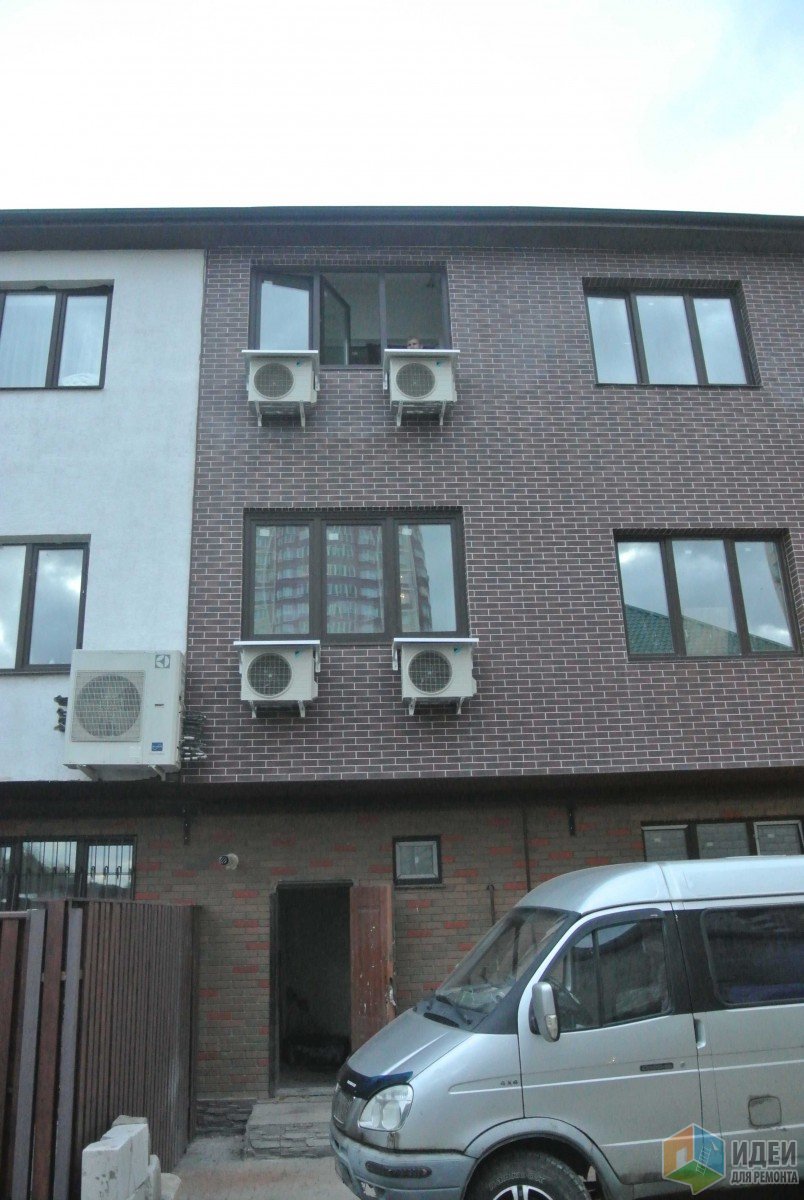
That's all. Ask questions. Good luck to all)
| Removal of the outdoor unit and bookmark highways |
Connecting/Installing the indoor unit/ Connecting to the system |
|||
| 07 | 7000 rubles | 07 | 1000 rubles | |
| 09 | 7000 rubles | 09 | 1000 rubles | |
| 12 | 8000 rubles | 12 | 1000 rubles | |
| 18 | 9000 rubles | 18 | 1000 rubles | |
| 24 | 11000 rubles | 24 | 1000 rubles |
|
The presence of an air conditioning system in the house is a guarantee of comfort . For a normal life, it is very important to maintain a certain temperature especially for summer time. Creates its own microclimate good conditions for work and leisure. You need to choose an air conditioner taking into account the quadrature and layout features. Usually store consultants help with the choice.
Many people, due to their lack of technical knowledge, underestimate the importance of correct installation technical equipment. Incorrect installation will not only reduce the efficiency of the split system, but also lead to a quick breakdown of equipment. In the best case, you will have to call the master, and in the worst case, you will have to purchase a new air conditioner. To protect yourself from such problems, it is better to immediately entrust the installation of equipment to specialists.
Preparatory stage
Professional air conditioner installation
begin with preparatory work. As for the location of the external and internal units, the engineer deals with this issue. The task of the client is to coordinate the arrival time of the workers. In addition, you should determine the location of the air conditioner yourself based on your personal taste and the interior of the room. It is best that you are present during the installation. So you can independently control all processes and be sure that the specialists have done their job efficiently.
It is most convenient to install the air conditioner during repairs. Firstly, the craftsmen will be able to carefully hide all communications, which will then be masked by cosmetic trim. Secondly, it will be easier for installers to work and drill the wall knowing that they will not damage furniture or wall finishes.
Many customers order installation in two stages. First, the wizards install only outdoor unit and carry out communications in the house. Terms of installation of the internal part of the air conditioner are discussed with the customer. This type of installation is very useful during a fine repair. After connecting the indoor unit, the masters set up the system and conduct several tests. In addition, the craftsmen pump air out of the equipment. This procedure is called evacuation and is performed using a pump. Thanks to it, freon does not mix with air, which retains the original characteristics of the refrigerant and prevents freezing of individual parts of the equipment.
What does a complete air conditioner installation include?
Drilling a hole in the wall to connect two separate units of the system.
Installation of external equipment. V apartment buildings it is harder to install this unit, so the installation cost is slightly higher.
Connection of a freon pipeline for the contact of 2 blocks. At this stage, the route is laid.
Drainage installation. It is through this tube that all condensate will exit the system. It is desirable that the flowing liquid does not cause discomfort to people passing by the house.
Fixing the inside of the air conditioner. The involvement of the client is very important here. He must inform optimal place air conditioner placement. After the final connection, it will be difficult to change the location of the indoor unit.
Connection of all electrical connections necessary for the stable operation of the system.
Vacuuming and starting the air conditioner.
The durability of the climate system depends on the quality of these works. Incorrect installation may affect the stable operation of the air conditioner. This will result in increased power consumption, overheating, excessive loads and slow cooling.
OUR WORKS
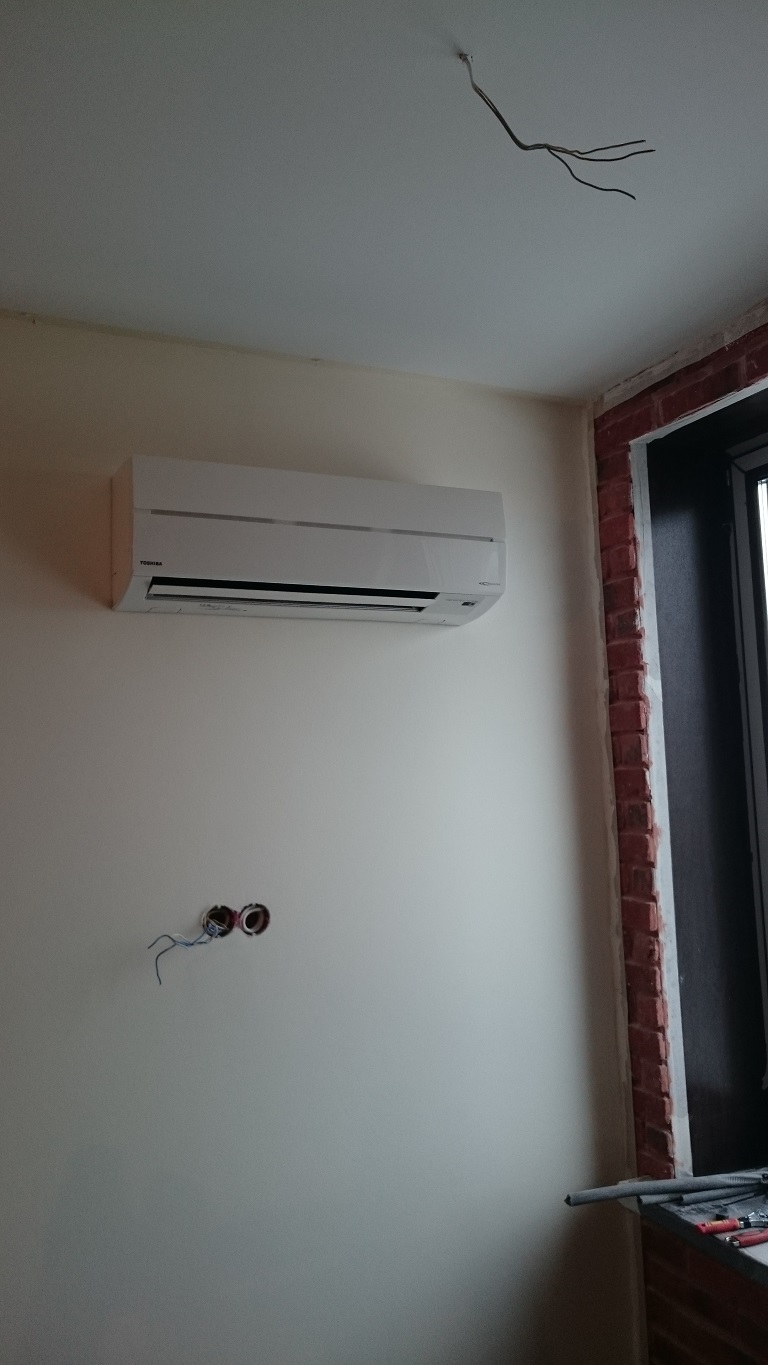
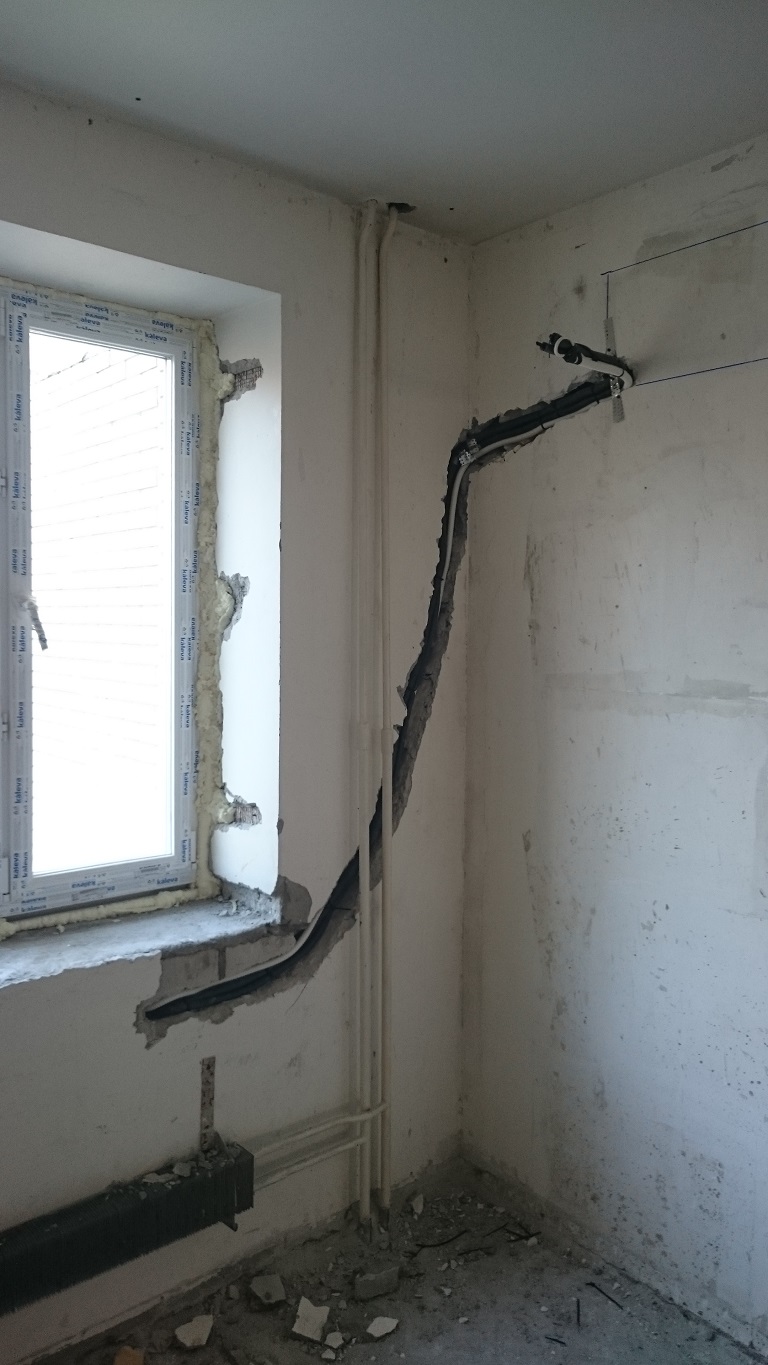
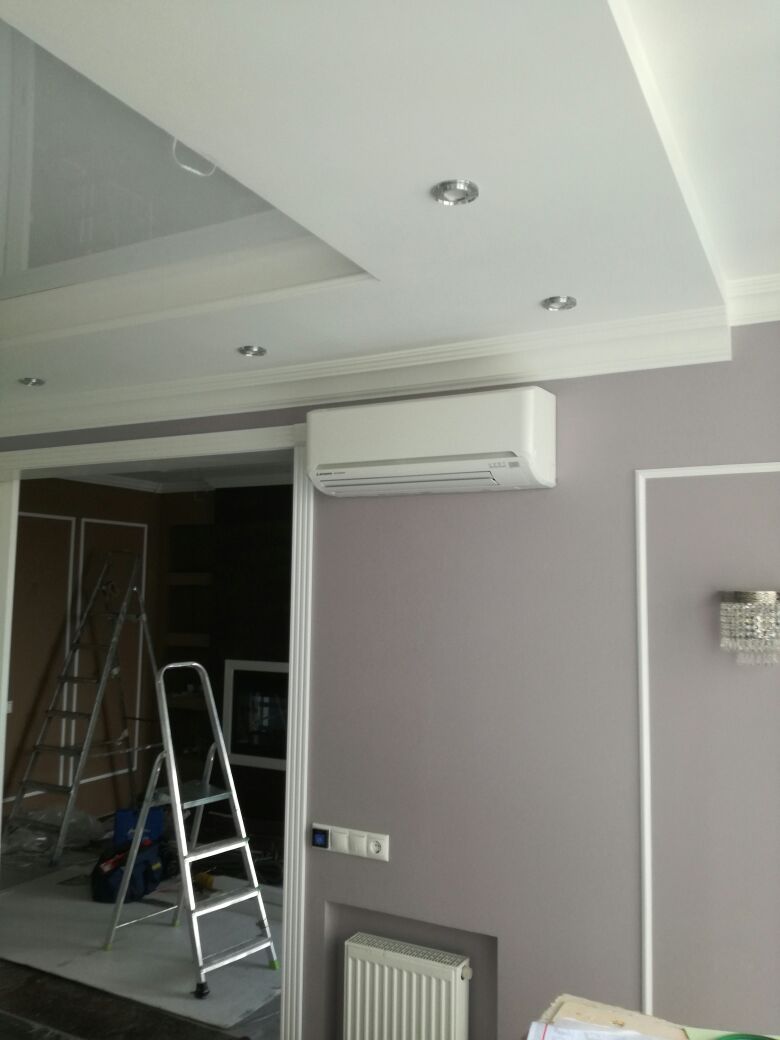
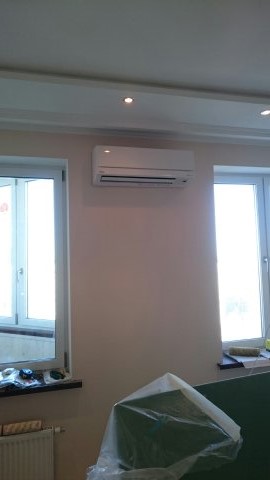
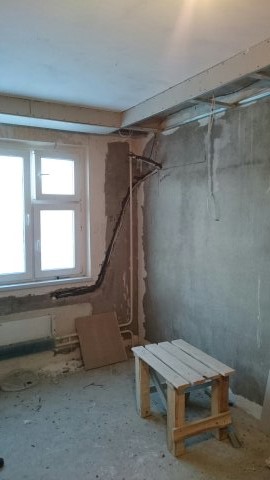
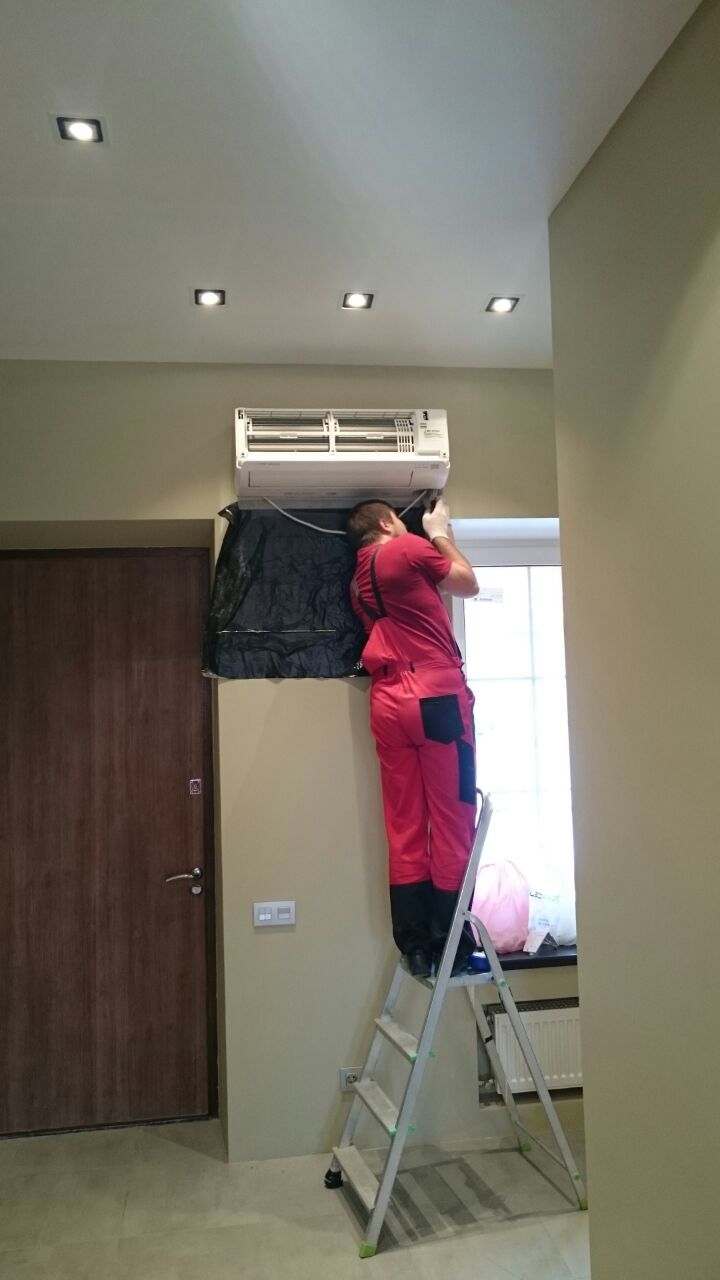
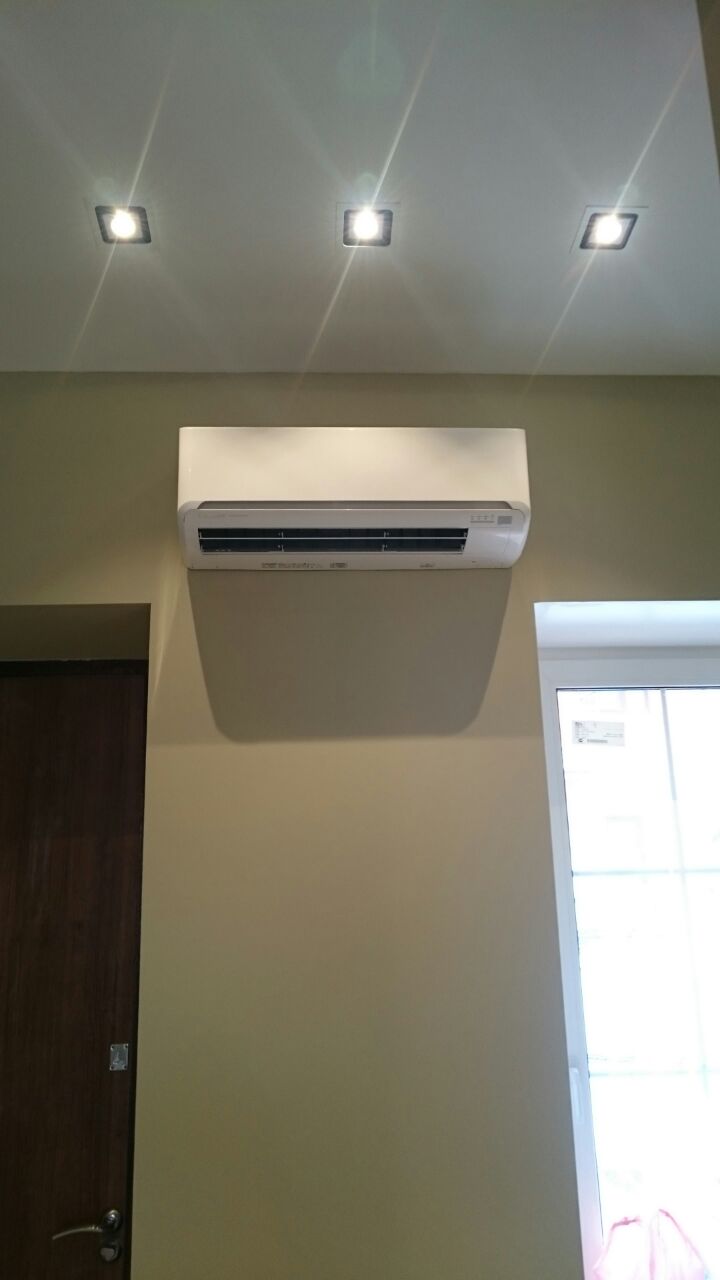
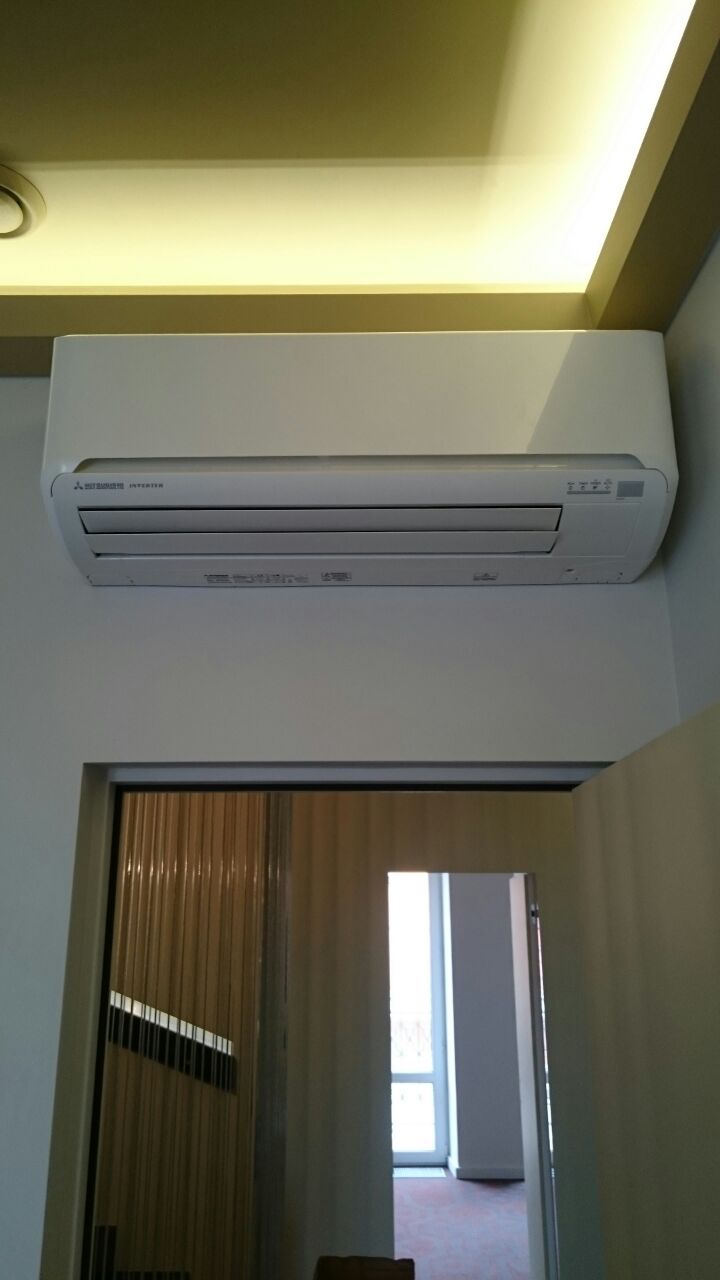
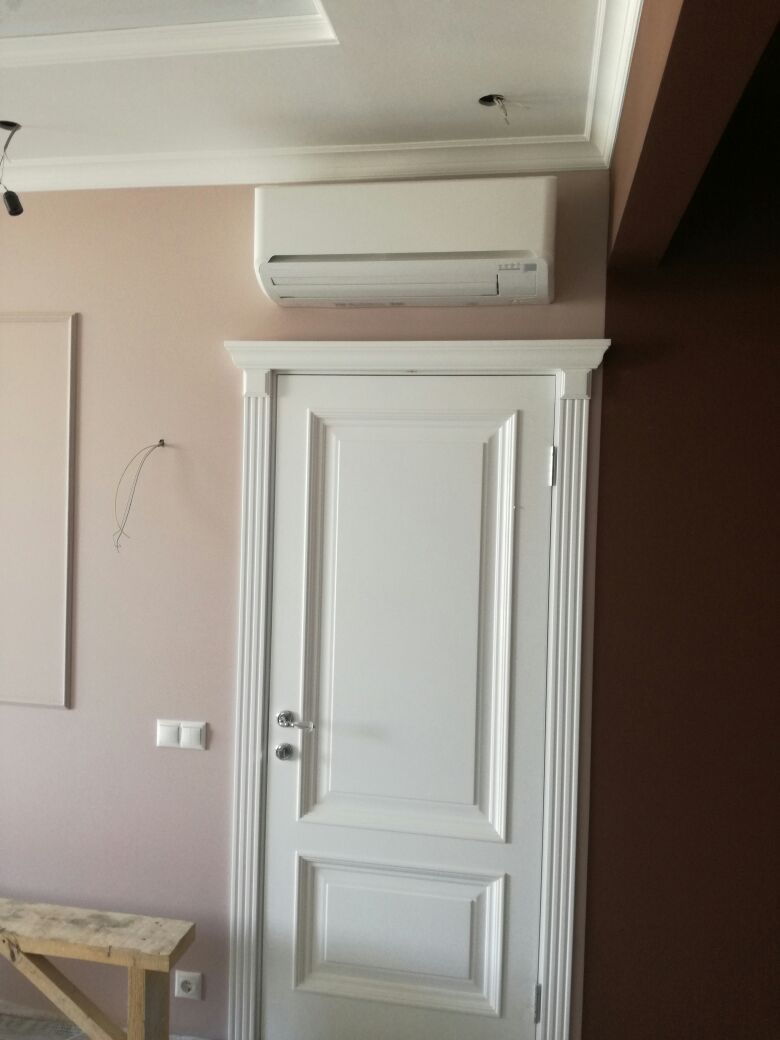
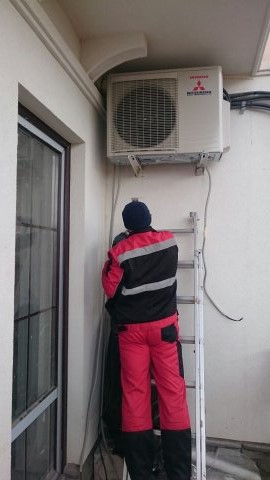
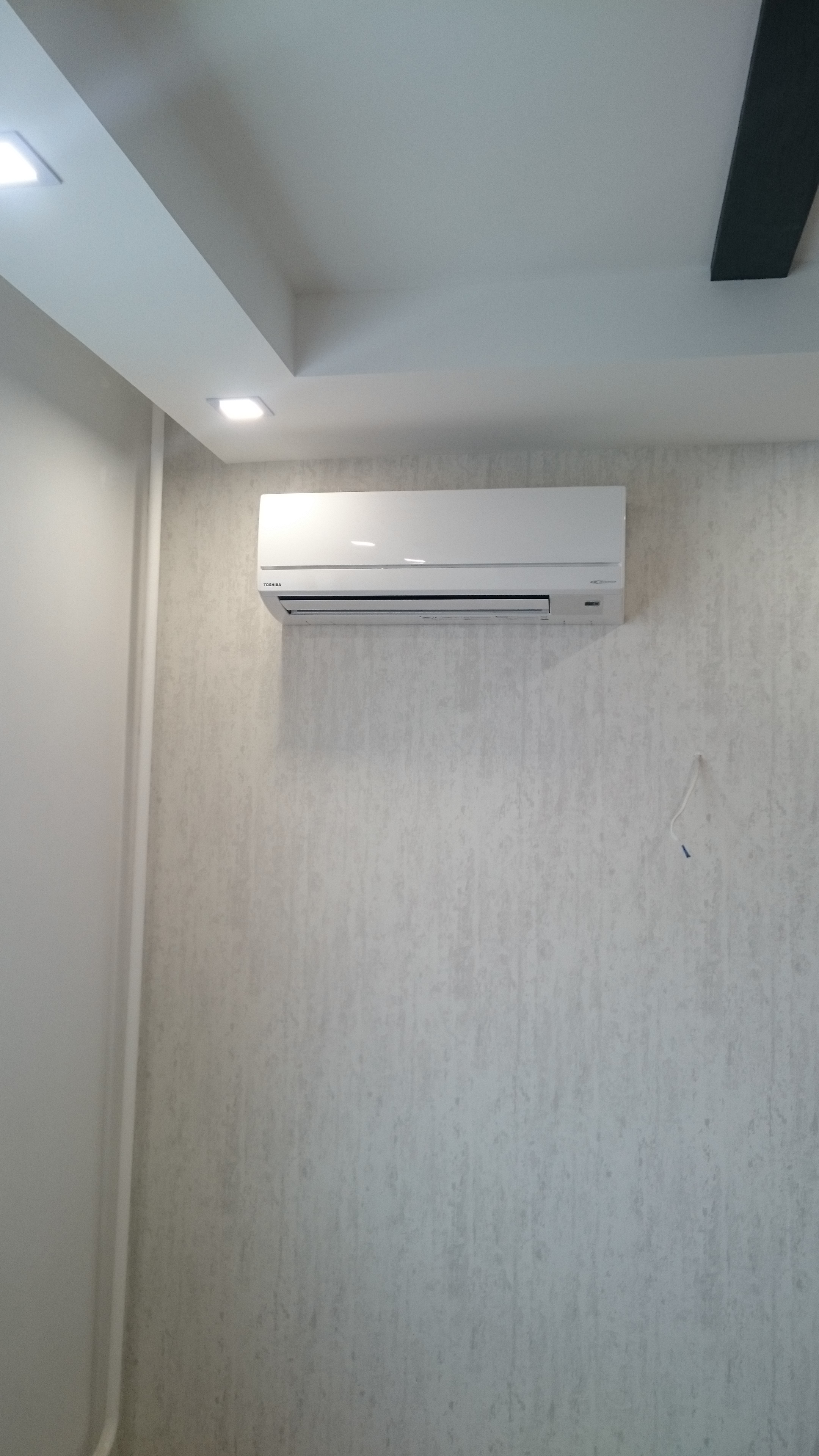
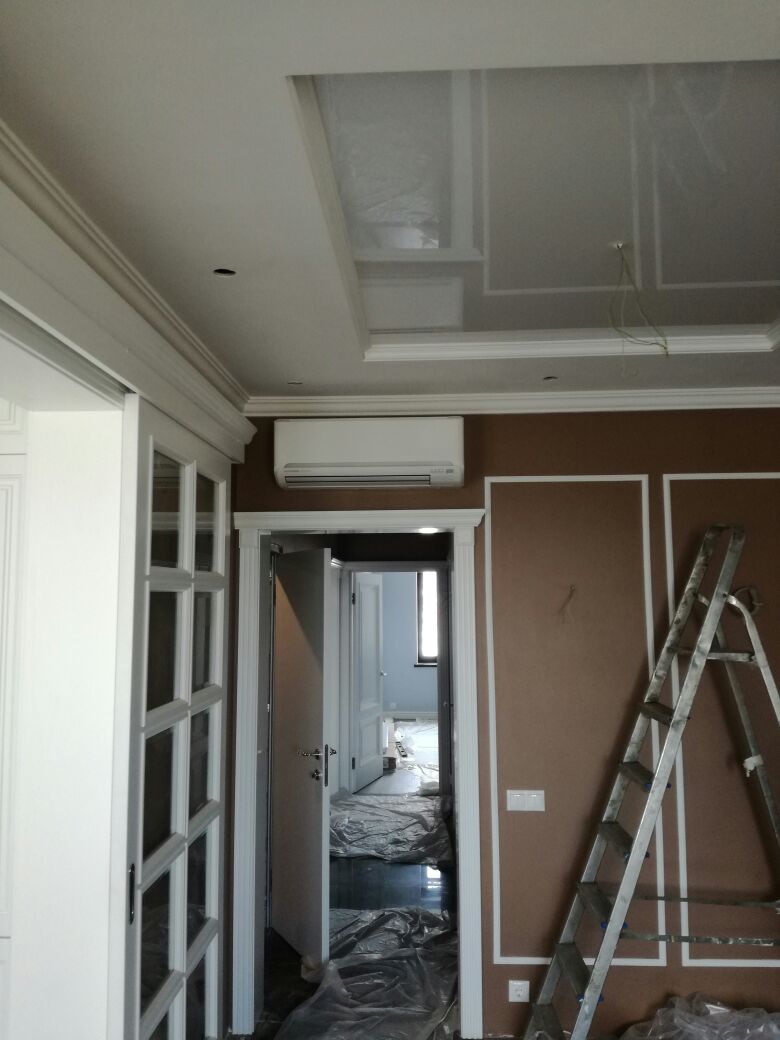
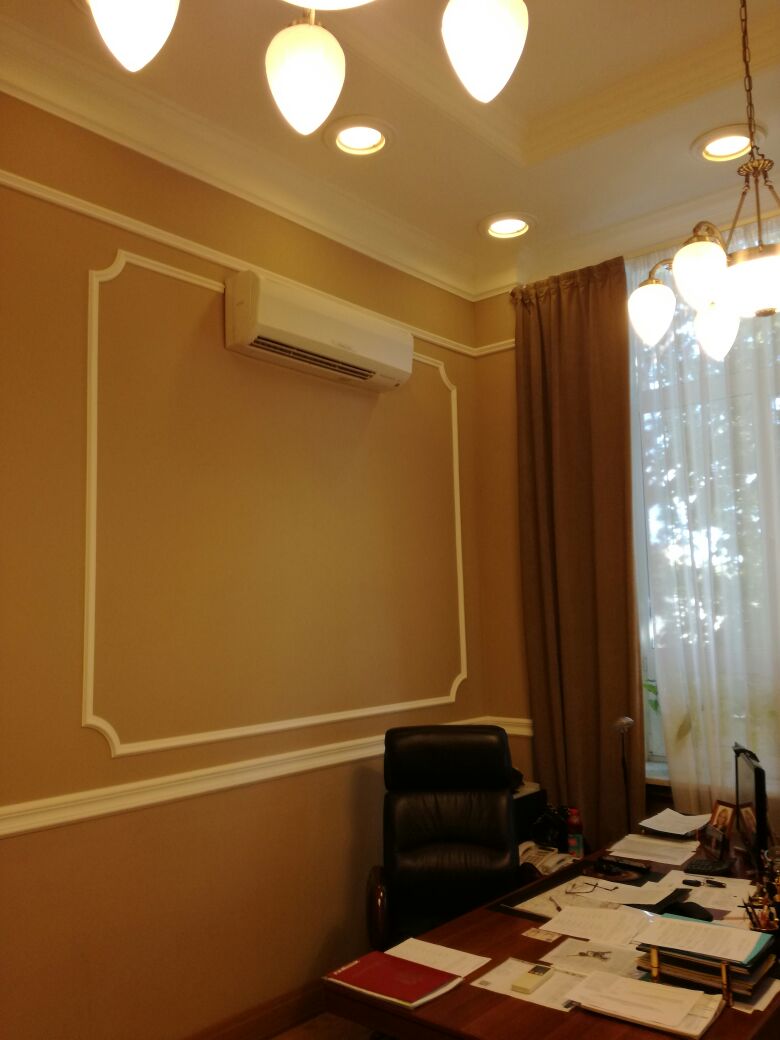
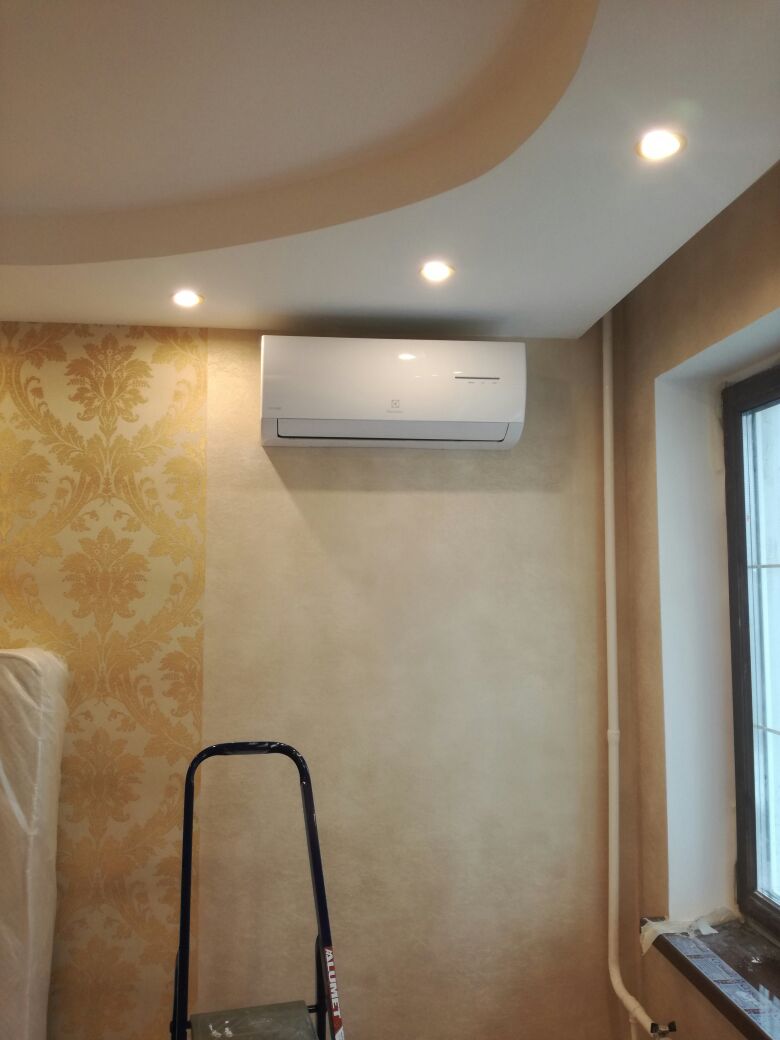
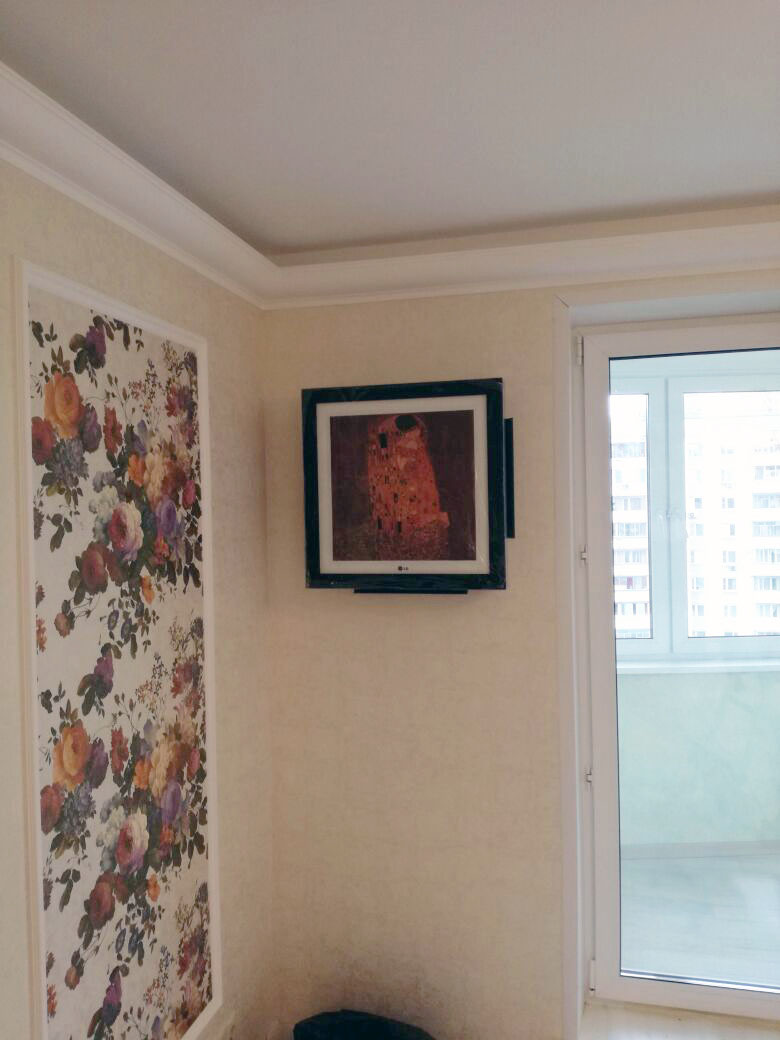
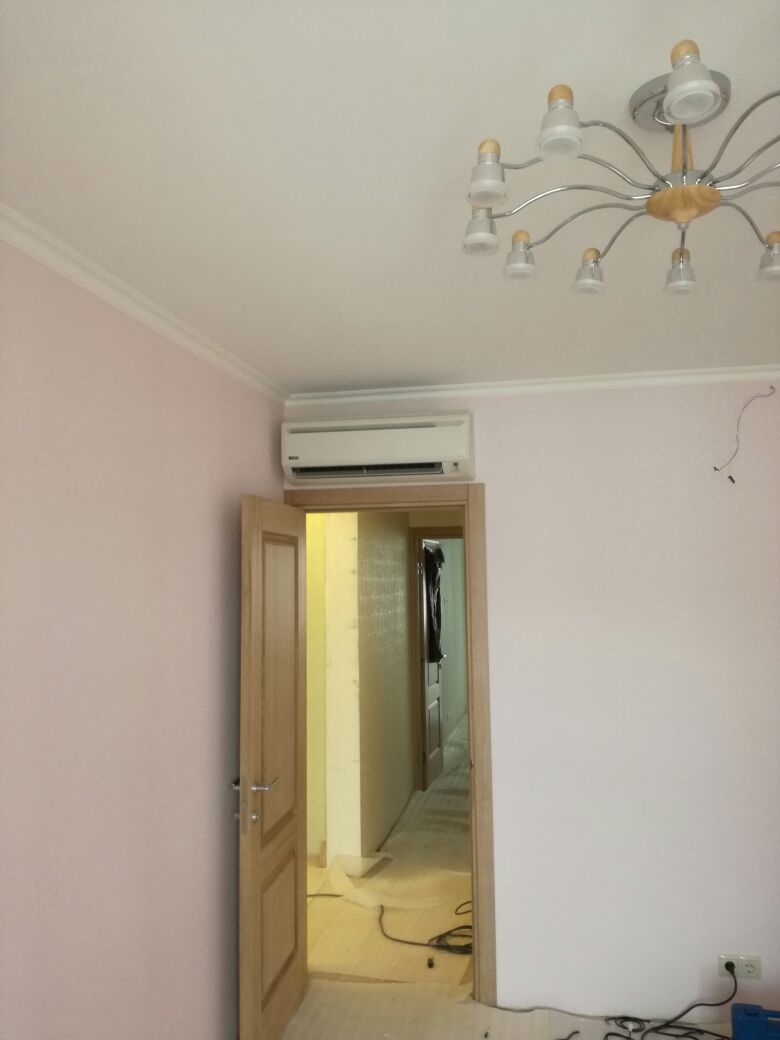
Air conditioners is one of the most sought after types. household appliances. Now their installation is more a necessity than a luxury. Usually for this purpose, professional installers are involved who are able to properly mount and install air conditioners of any kind. The duration and quality of its work depends on how correctly the system is installed. Our company offers the services of its highly qualified specialists who know all the nuances and perform their work efficiently and on time. Here's how the whole process goes.
Two step installation
Often, air conditioners are mounted by laying pipes, cables and drainage pipelines in strobes. It is more expedient to do this during repairs in the room. This installation method is divided into two stages and makes it possible to install the indoor unit with hidden communications in the end. And this means that it will remain undamaged and clean.
The first stage consists of punching a strobe, drilling holes on the outside of the wall, laying pipes, cable systems, etc. On the outside of the wall, an external air conditioner unit is installed (it is imperative to observe the horizon, otherwise you are guaranteed a breakdown of the compressor) and the laying of communications leading to it. Thus, the ingress of moisture into the pipes and oxidation of the ends of the cables is excluded. The first stage involves carrying out a maximum of work (pipe flaring, cutting / bending, fixing brackets, etc.), so as not to spoil the repair later, to prevent wallpaper from peeling off due to drafts and dampness.
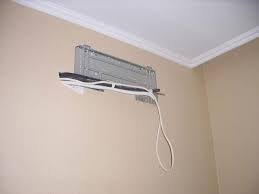
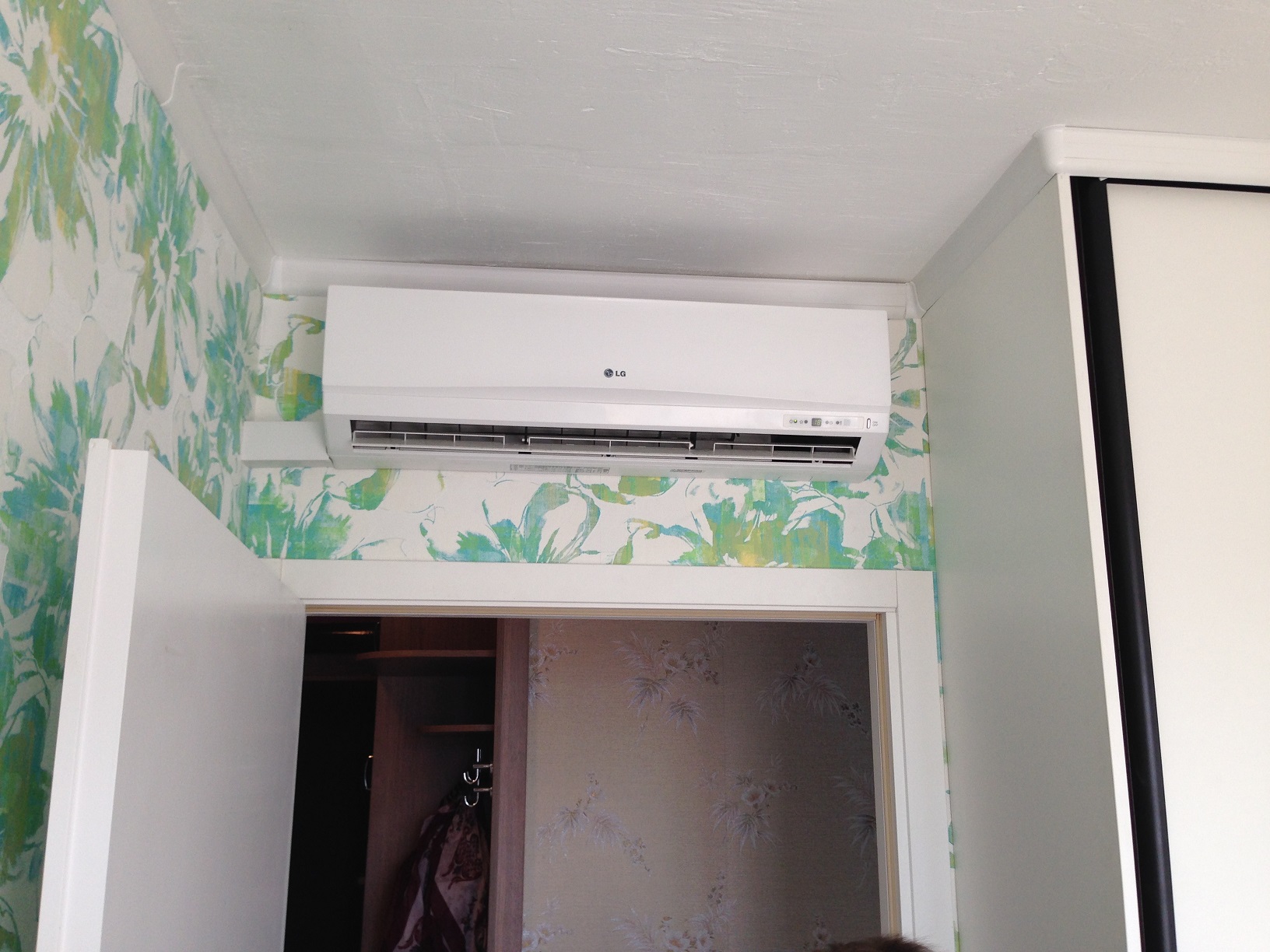
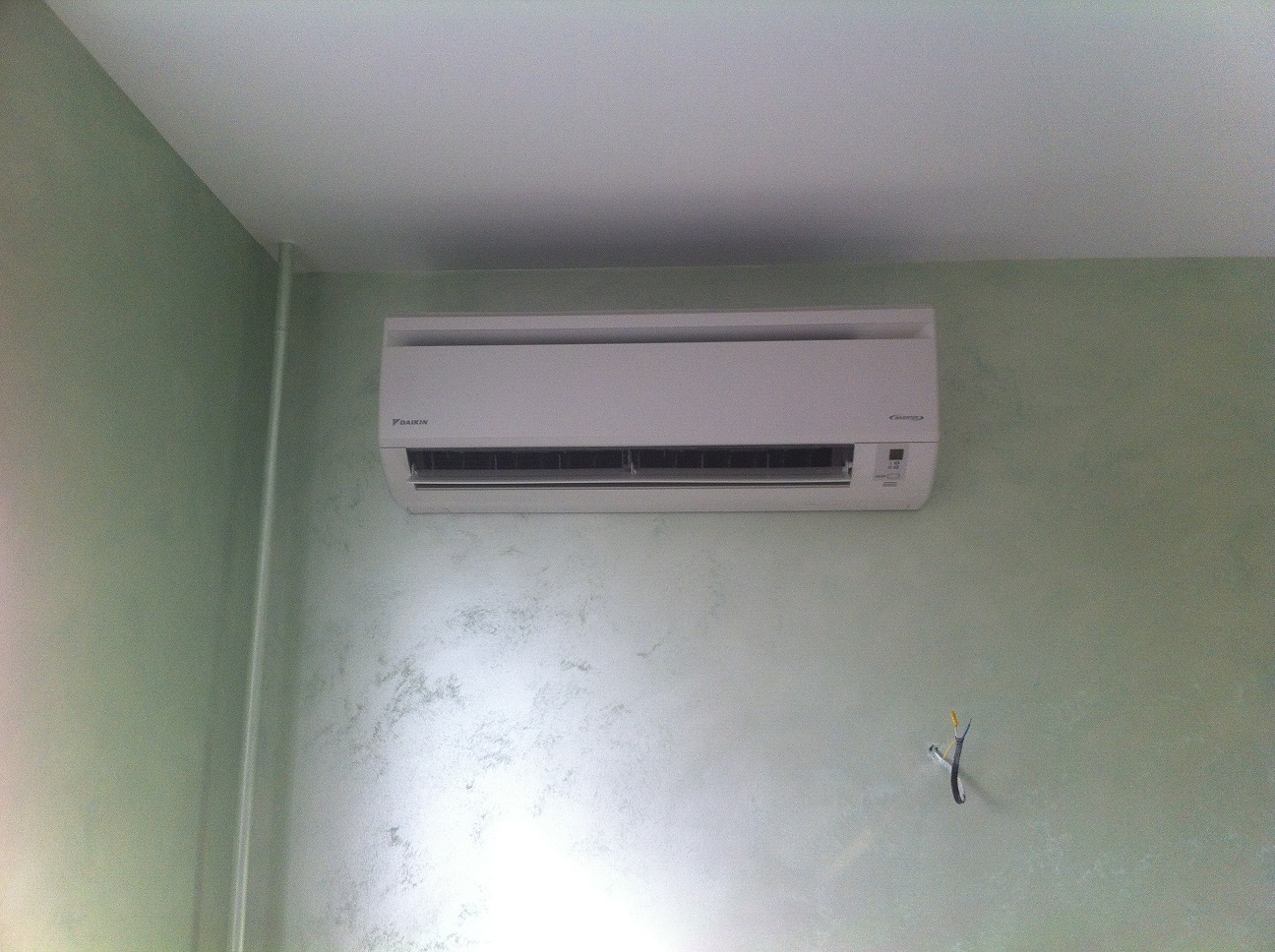
At the second stage, the indoor unit is installed, the necessary communications are connected to it, and vacuum is performed. It is better that the repair team, and not the installers of the air conditioner, deal with the chasing of the walls - this will be more profitable for you economically.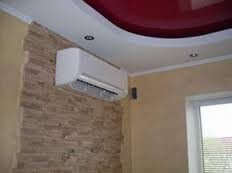
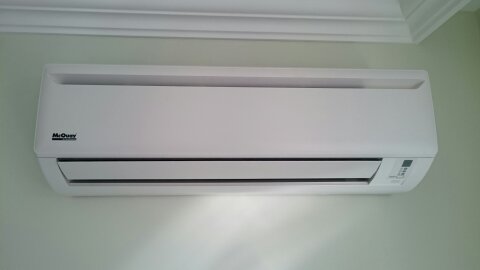
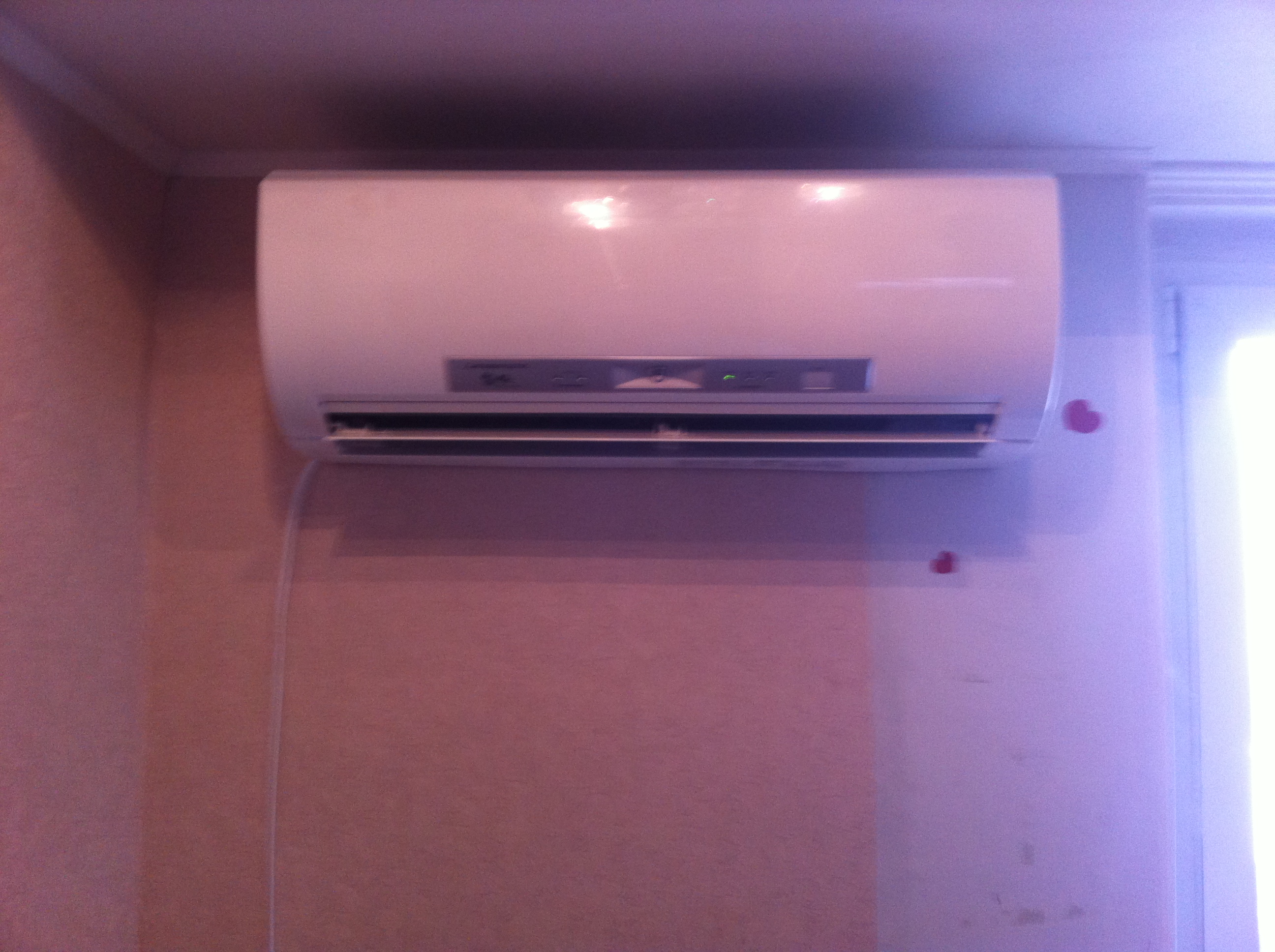
Choose a place
Usually a consumer, when buying an air conditioner for the first time and choosing a place for it, thinks only about the aesthetic side of the issue. Practical considerations are often left aside for the time being. But it should be the other way around. So, what should be considered when installing air conditioners? There are some rules:
- Outgoing air flows must not be directed towards people, as colds will be the result. After all, cold air jets are somewhere 15 0 C lower than the temperature around human body. For example, if a bedroom is chosen for installing an air conditioner, then its optimal location is above your head. In this case, the legs covered with a blanket will be blown.
- When installing air conditioners, the location of the indoor unit should be such that it does not violate the overall design of the room. For this reason, you should not hang the air conditioner in front of the entrance. You should also leave at least 10 cm between the top panel and the ceiling.
- It is undesirable to install air conditioners at a distance of less than 1 m from the top of cabinets, chests of drawers and other furniture. Not only will you have difficulty cleaning, but the operation of the device will be complicated due to poor ventilation. If dust often collects on the surface of cabinets, then when you turn on the air conditioner, it will fly to the floor and spin around the room, making it difficult to breathe.
- When installing the air conditioning device, you need to make the length of the route as short as possible. This will significantly save money and not spoil the design of the room.
Customer concerns
During the preparation process, you will not have much worries. It is enough just to know the time of arrival of the brigade and be at home to clarify some points. You will need to adjust the location of the indoor unit, laying communications in a decorative box, etc. Upholstered furniture, fragile things and household appliances can be damaged or dusty during the wall chasing process, so it is better to take them out or cover them. All works are quite noisy, they can scare kids and pets, so they should also be sent for a walk on Fresh air. Upon completion of installation, check the pumping of air from the circuit using a vacuum cleaner (exhaust pump). When signing the acceptance certificate, check the condition of the air conditioner beforehand.
Standard - non-standard approach
- Installation can take place in the standard way. This installation option is the simplest and, accordingly, inexpensive. For example, your walls are not higher than 3.5 m. Then outdoor unit installed under the window, and the inner one - next to it. Quite often, ladders are used for these operations. The drainage pipe is brought out, and the cable (no more than 4 m) is placed in a decorative box between the blocks inside and outside the building. External communications from the street are not hidden in it.
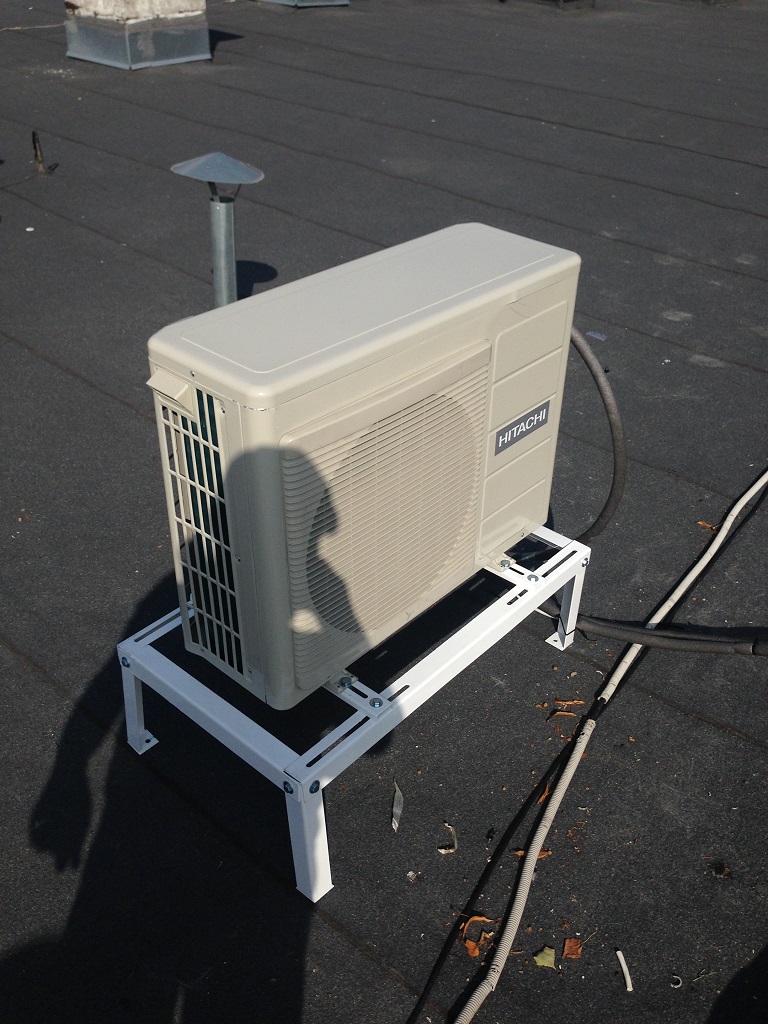
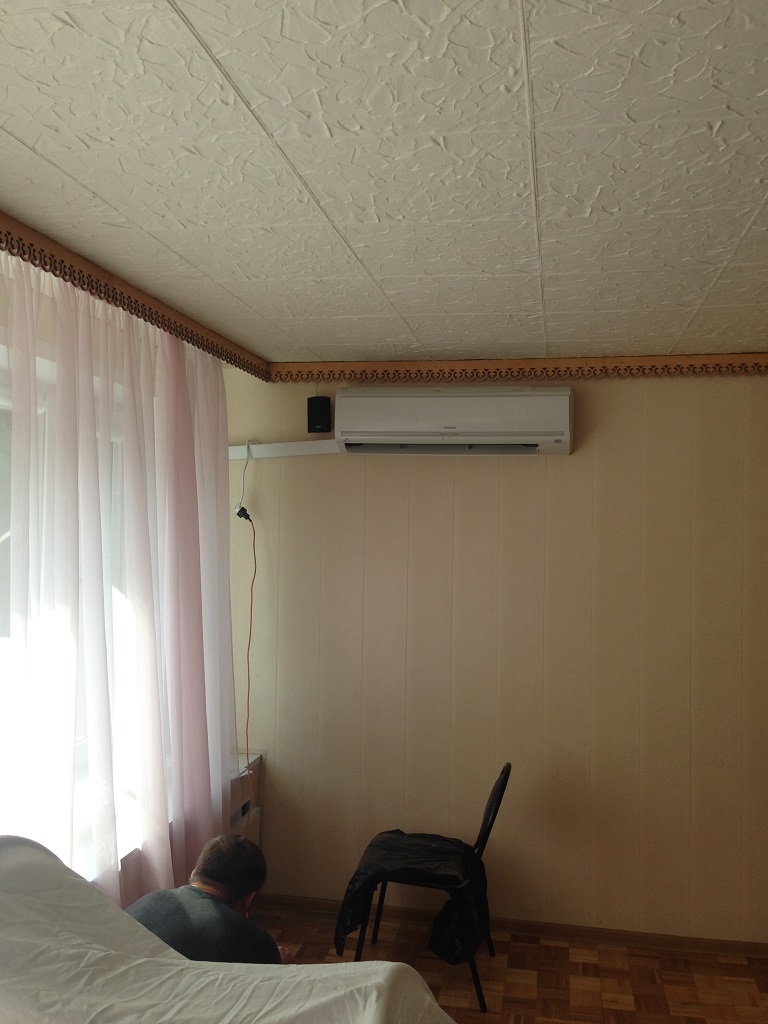
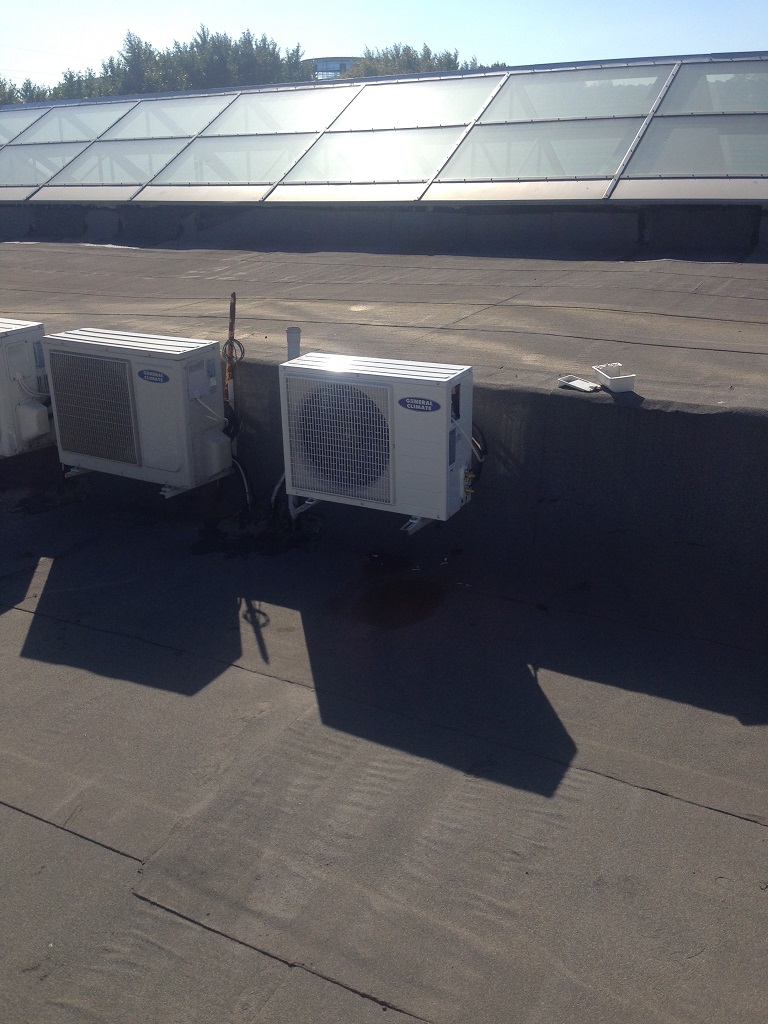
![]()
- A non-standard installation option provides for the installation of an outdoor unit by a climber. The total length of communications here can exceed 5 m. For the installation of climatic equipment, wall / ceiling chasing is used. All communications (internal and external) are placed in a decorative box. Installation work are carried out in several stages.
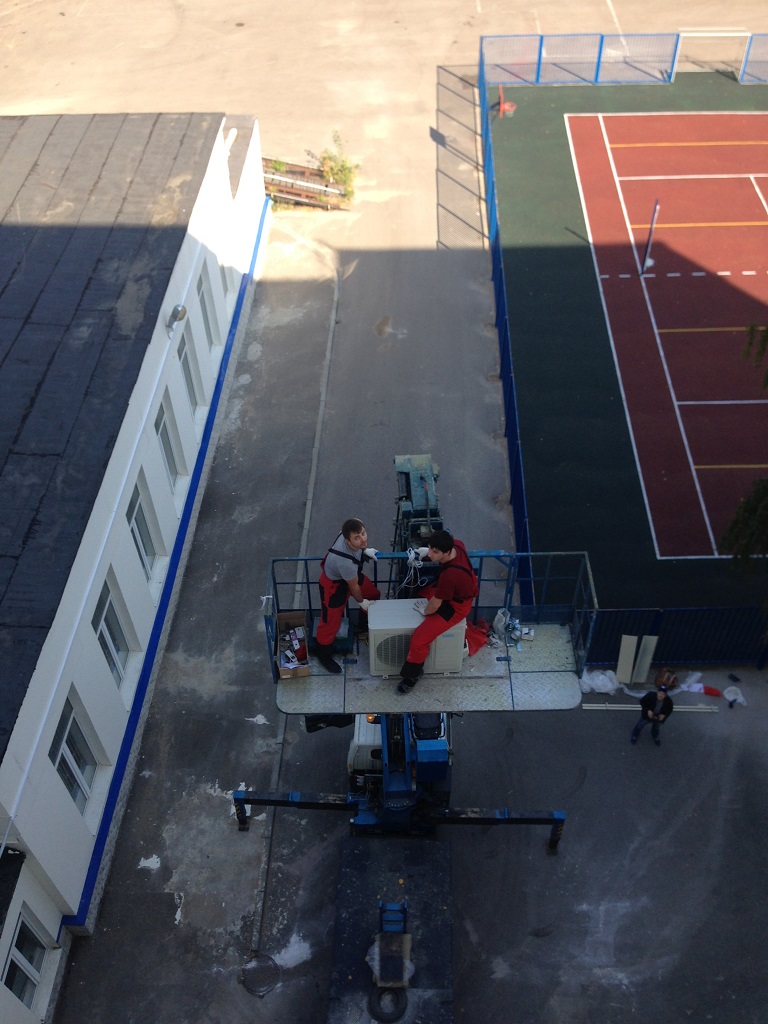
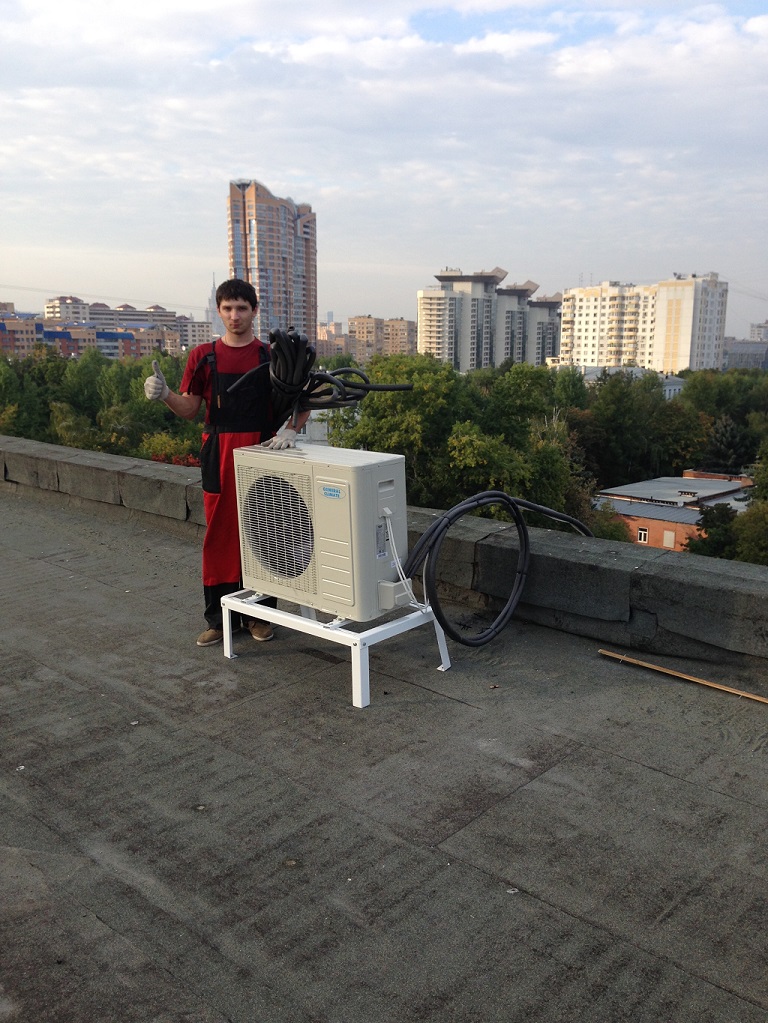
Considering all of the above, we can conclude that consumers living on the second floor and above need non-standard installation of the air conditioner, because. here you can not do without the help of climbers.
Finally, I want to say - trust the professionals. Installing the air conditioner yourself is very troublesome and difficult. In addition, during the operation of the device, unforeseen incidents may occur, which will be the result of its unqualified installation. A guarantee on your own installed air conditioners the manufacturer does not. Using our services, you can avoid many troubles .
One of the reasons that stop us from installing an air conditioner at home and enjoying this achievement of human thought and technical progress is the reluctance to have the air conditioner unit itself and the outdoor unit under our windows appear in the apartment. But if the blocks can be installed as neatly as possible so that they are not conspicuous, so that they fit the design of your premises, be it an apartment, a business center, a school, a shop or a hospital.
PROMOTION. Installation of the air conditioner in 2 stages in the period up to 03/01/2015 is carried out at winter tariffs.
In addition, I want to add that now there is such a rich range of models of air conditioners of all colors and various shapes that it will not be difficult to choose the appropriate equipment. But what you can’t put up with is the presence of boxes for laying communications both in the apartment and on the street, not to mention the so-called “snot” - black trails hanging from a hole in the wall to the outdoor unit of the air conditioner. Installation of the air conditioner before repair or after repair? Everyone decides for himself!
| Installation of the air conditioner in 2 stages, during the renovation of the apartment. Prices in rubles. (winter/summer rates) | |||
| Stage 1: Laying the route, in the presence of an air conditioner, the installation of an external unit is performed | 6500/7000 rubles for air conditioners with a capacity of 07(08)-09(10) | To lay the route in the wall with the help of a specialized tool, a strobe is organized for laying air conditioning communications of the appropriate width and depth (wall chasing is not included in the cost of laying the route). Only a professional tool should be used for these works. In some cases, it is advisable to use an industrial vacuum cleaner. Then the track is laid in the prepared groove, it is very important here that it does not bend or get mixed up. Then your repairmen finish with plastering and gluing or painting. | 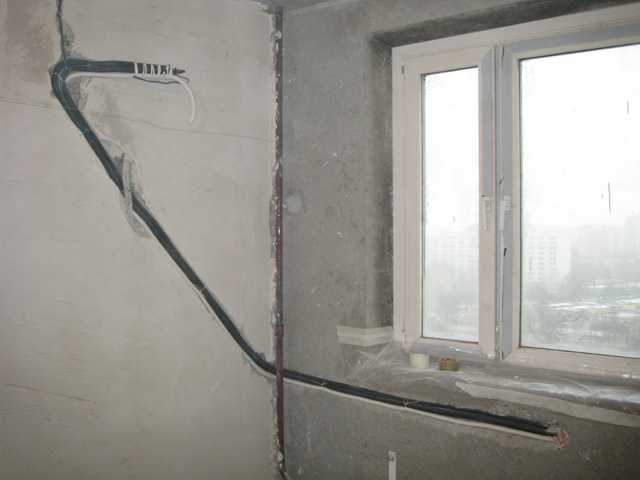 |
| Stage 2: Installation, evacuation of the system, leak test, start-up of the air conditioner | 3000/3000 rubles for air conditioners with a capacity of 07 (08) -1.2 (1.3) | At the second stage, air conditioner units are mounted, inter-unit communications are connected and all systems are checked for operability, commissioning is carried out in accordance with technical regulations. If everything works without failures, an official guarantee is issued for the work performed. | 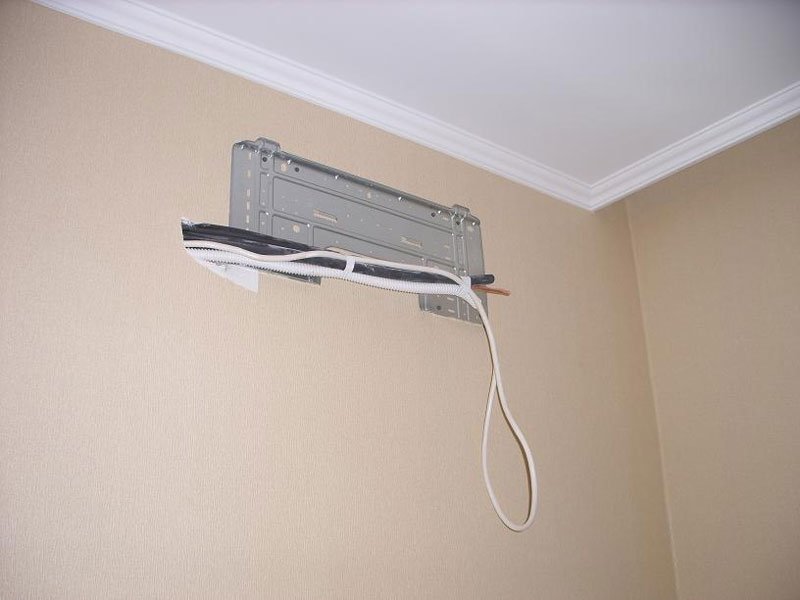 |
| The price for the installation of air conditioners from 3 sets of air conditioners with a capacity (07-09) | discounts are available | If you plan to install more than two air conditioners, a discount is provided according to the current price procedure in the TK-service company. You can learn more about discounts directly from our managers. | 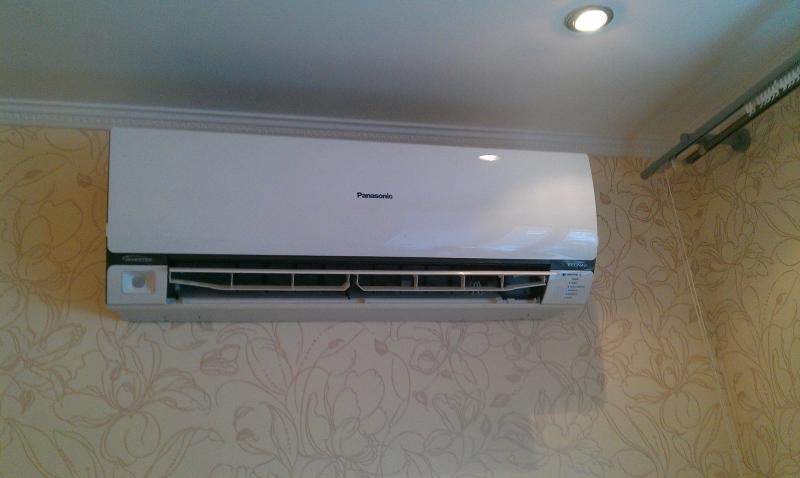 |
| Wall chasing is calculated separately depending on the footage and wall material. Installation of air conditioners in two stages of large capacities is calculated separately. | |||
What to do, is there really no solution? Of course have! In this case, it applies air conditioning repair installation or what else is called installation of air conditioners in 2 stages. During the repair, the air conditioner is not installed at a time as usual, but in several visits of the installation team:
- 1. You leave a request with our managers for an engineer to come to you to discuss your wishes. After the locations of the desired placement of equipment, the size of the premises and their architectural structure are understood, our employee will advise you on the best and where to place the equipment, which air conditioners are best to choose. Our duty is to try to help you in your choice. Further, after you specifically tell us where to install the air conditioner units, our employee will draw a detailed strobe for the air conditioner route and electrical communications.
- 2. The strobe is drawn. Both our installers and your builders can ditch the wall according to our sizes. not included in the standard installation of air conditioning in 2 stages.
- 3. An air conditioner route is laid to connect the indoor and outdoor units to each other, a drain pipe is laid to remove condensate. If the level is not particularly important for freon communications, then the drain hose should be laid at a downward slope from the indoor unit. It is also important that the horizontal difference between the indoor and outdoor units does not exceed the stated in technical characteristics. It is advisable to lay electrical wires in a strobe in a corrugation.
- 4. After the track is laid, your workers cover the track and complete the repairs.
- 5. And at the end, the installers come for the last time, install the internal units of the split system into the external units, perform vacuuming and other commissioning work, and a guarantee is issued for the work done.
As a result, we get two neat standing block without any wires. It's expensive to watch.
After the air conditioner is installed, do not forget that the split system is a complex technical device. must be carried out at least once a year and it is advisable to entrust it to the installers who carried out the installation.
Installation of air conditioners after repair, during repair
In any case, even if you forgot to prepare for the installation of the air conditioner in two stages, our specialists will install the air conditioner after repair with minimal damage.
Company "TK - Service" © Installing the air conditioner in 2 stages.
If you have renovation in progress in the apartment, it's time to think about installing air conditioning. It is during the repair period that it is possible to hide interconnections in the wall. Thus, the installation of the air conditioner is divided into two stages.
How is all this done? Having decided on the brand, the split system itself and the installation site, it is necessary to drill a communication channel in the wall, approximately forty millimeters deep and wide. Here it is necessary to take into account, based on the size of the indoor unit, the height of the ceiling, how much it will fall (if it continues to fall). At the end of the grooved channel, where it rests on outer wall, a through hole is drilled, where communications will go.
In the future, after laying the interblock route, you continue to repair until the final finish - painting, gluing, etc. At the site of the proposed installation of the air conditioner, the very endings of inter-unit communications will come out of the wall. Here the second stage of the installation of the air conditioner takes place - the connection of the indoor unit and commissioning.
With this method of installing the air conditioner during the repair, there are several nuances that must be taken into account. 1st is drainage (a hose through which condensate will drain). If the condensate flows out into the street, then, of course, chasing at a slight slope is necessary so that the liquid from the indoor unit can go by gravity. If the drainage will be laid into the sewer, an additional strobe is also needed here, in which the drainage hose will be laid. Accordingly, it should also go at an angle for an independent flow of condensate. At the junction of the hose with the riser, the question arises of raising the smell from this sewer to the indoor unit of the split system. Here comes to the rescue special device called a siphon. It blocks the return air from the sewer.
If it is not possible to drain the condensate at an angle downwards, and there is an obstacle to the self-draining of the liquid, drainage pumps have been invented for such cases. This is a small pump built into the indoor unit of the air conditioner, or anywhere else, for forced withdrawal.
The second thing to consider when laying the route in the strobe is the correct connection of the strobe to the indoor unit of the split system. Here the subtlety lies in the fact that on the back of the indoor unit wall air conditioner, connection copper pipes runs from its right side to the center. That is, for the connection to work, the direction of the outer tubes must be directed from left to right (shown in the figure below). Thus, if it is the right wall, the strobe runs straight from the wall to the connection point. If this is the left wall, here the wiring of communications in the wall should go like a hook.

Air conditioning today is a necessary thing in every home. It has not been associated with wealth and luxury for a long time, now almost any family can create a pleasant atmosphere at home. Therefore, more and more people are thinking about the moments associated with its installation. The first question that comes to mind is when is it better to install an air conditioner? After all, it can be mounted during repair or after.
At the moment, the installation of split air conditioning systems at the stage of the beginning of repairs in the room is becoming more and more popular. And it doesn't matter, it office space or residential apartment. How can this be explained? This approach to installing an air conditioner is due to the fact that during the repair process you can hide electrical cable and drainage in the wall. The main line with freon is also perfectly hidden in thermal insulation or boxes. In order to hide all the communications of the air conditioner in the wall, it will have to be pierced. The groove should have dimensions of 50x70 mm, this size is enough to fit everything you need into the strobe. When everything necessary is laid, the groove is plastered, puttied and finished with the necessary materials.
As a rule, it is better to entrust the work of chasing and plastering the wall to the workers of the construction team that is renovating the room. If you entrust the same work to installers of climate equipment, they will do the job no worse, but much more expensive. So it's purely a matter of saving money. It is worth considering one more detail, if you decide to entrust the gating to a team of air conditioner installers, then you need to take into account that in most cases, the work of cleaning up the resulting debris and plastering is not included in the cost of work. This needs to be negotiated individually, but it is not a fact that such work is carried out by a specific company.
The first step is to drill a hole in outer wall for the output of the highway and drainage to the street, as well as gating. The main and power supply is connected to the external unit. The block itself is also installed on initial stage. The initial stage of installation costs approximately 75-80% of the cost of the entire installation.
The second stage is a "clean" installation. It is produced in a renovated building. This approach allows you to keep the internal equipment of the air conditioner in a completely safe condition and guarantees that the external unit will not be damaged by repairmen.
If the air conditioner is installed during the repair process, then it is possible to bring the drain hose into the sewer, which will save you from unpleasant conversations with irritable neighbors who can be very annoyed by dripping condensate.
At the end of the installation, be sure to ask the workers to test run the air conditioner. It must function normally in all intended modes of operation.











How to understand: will the kitten be fluffy?
What light alcohol can pregnant women drink: consequences of consumption
Why do legs swell in the ankles and ankles of feet in pregnant women: causes and methods of treatment
The wedding of Prince Harry and Meghan Markle: scandalous and secret details of the marriage (photo) Future marriage of Prince Harry year NTV
How to close white plums for the winter